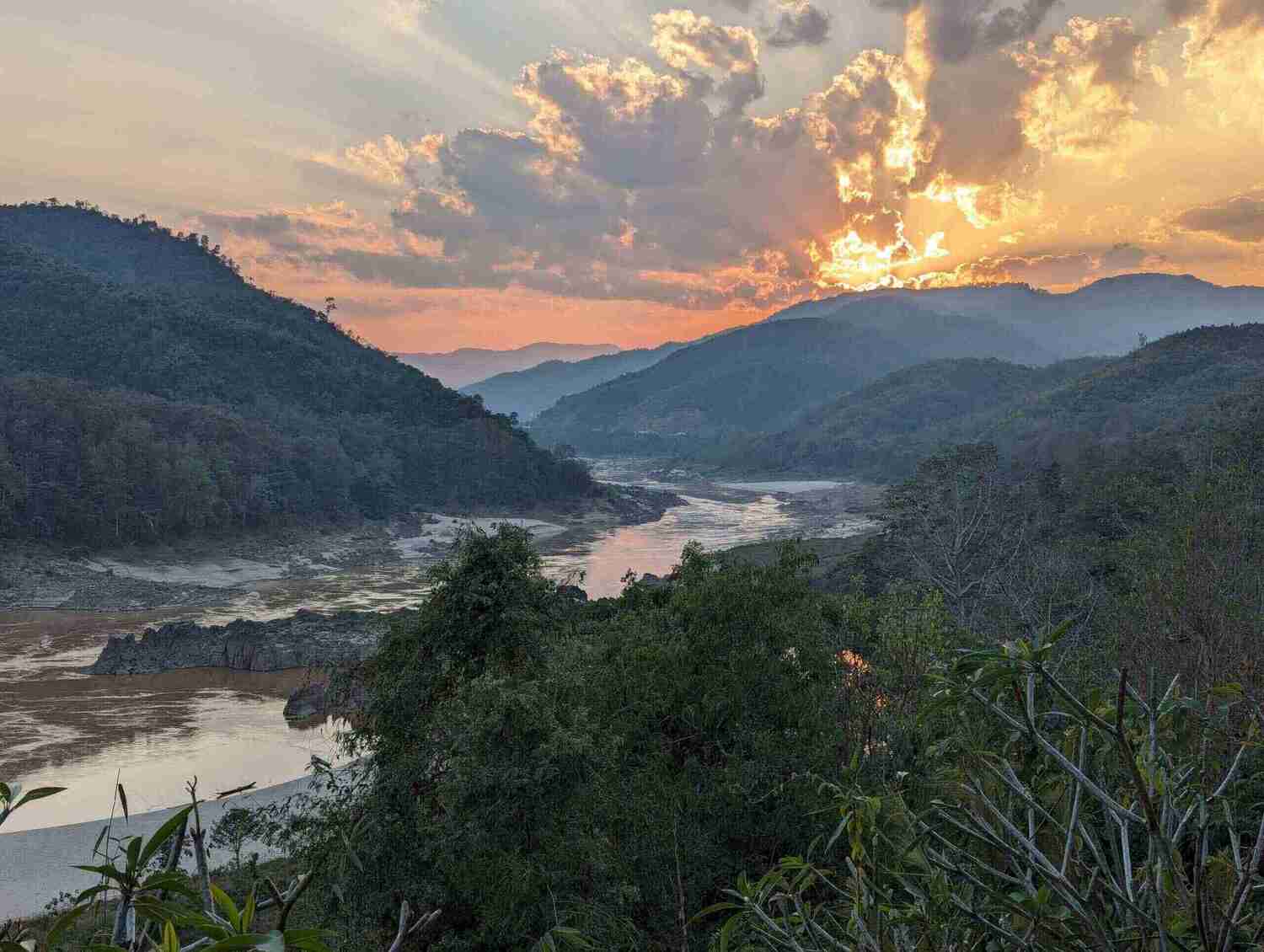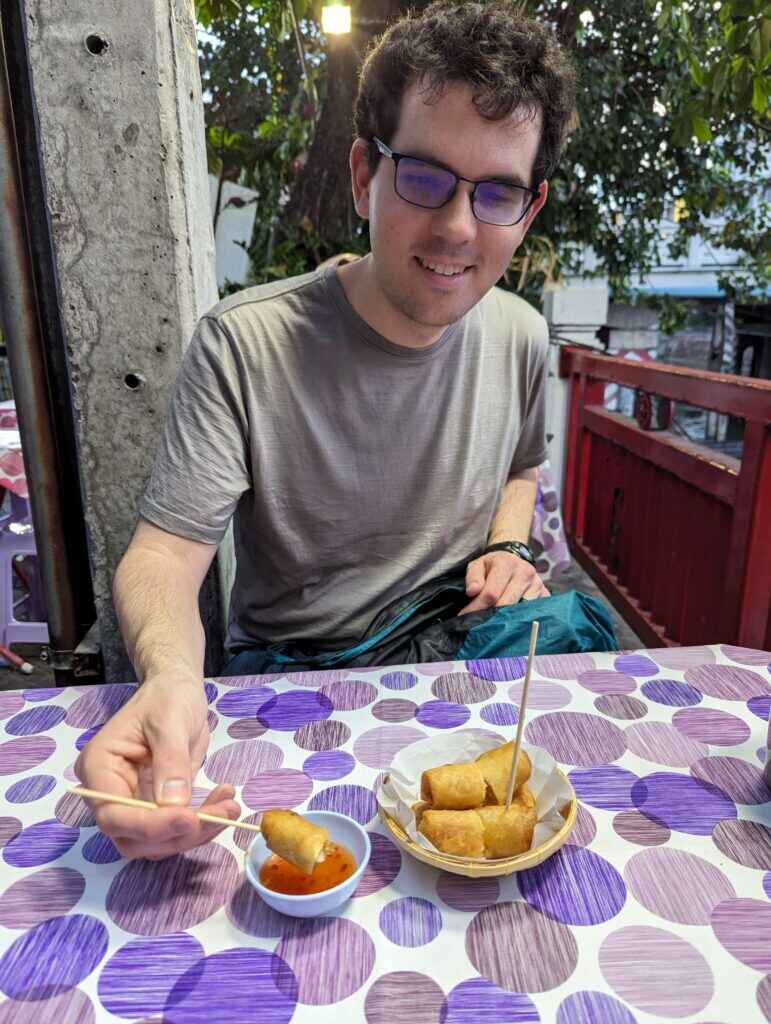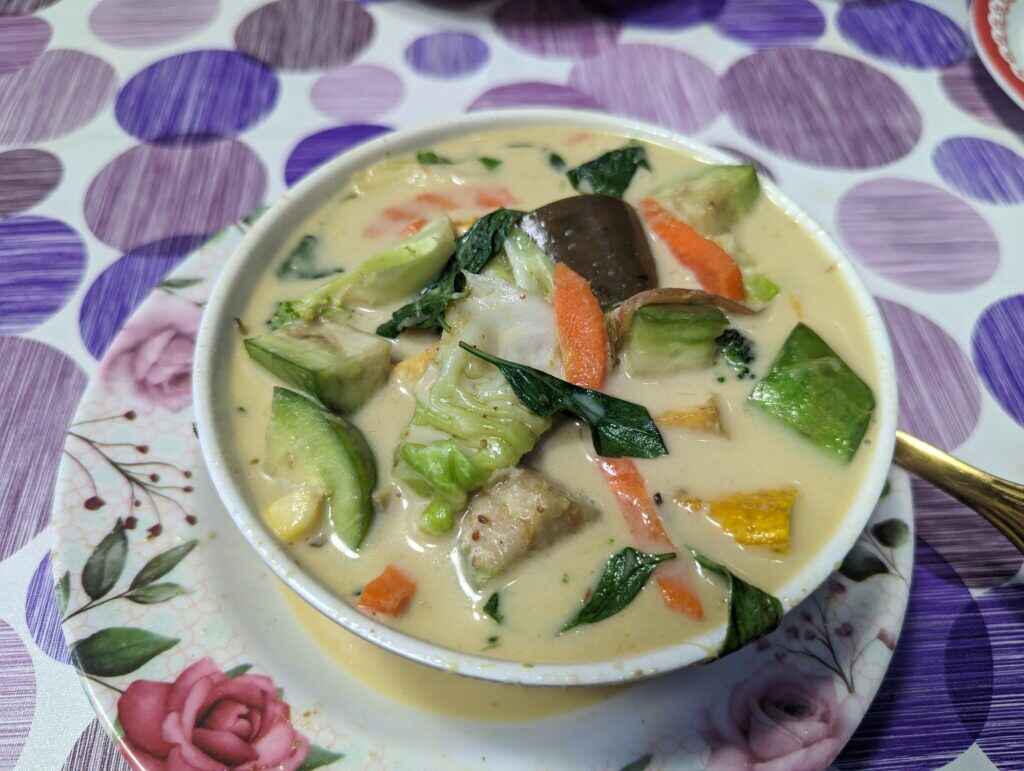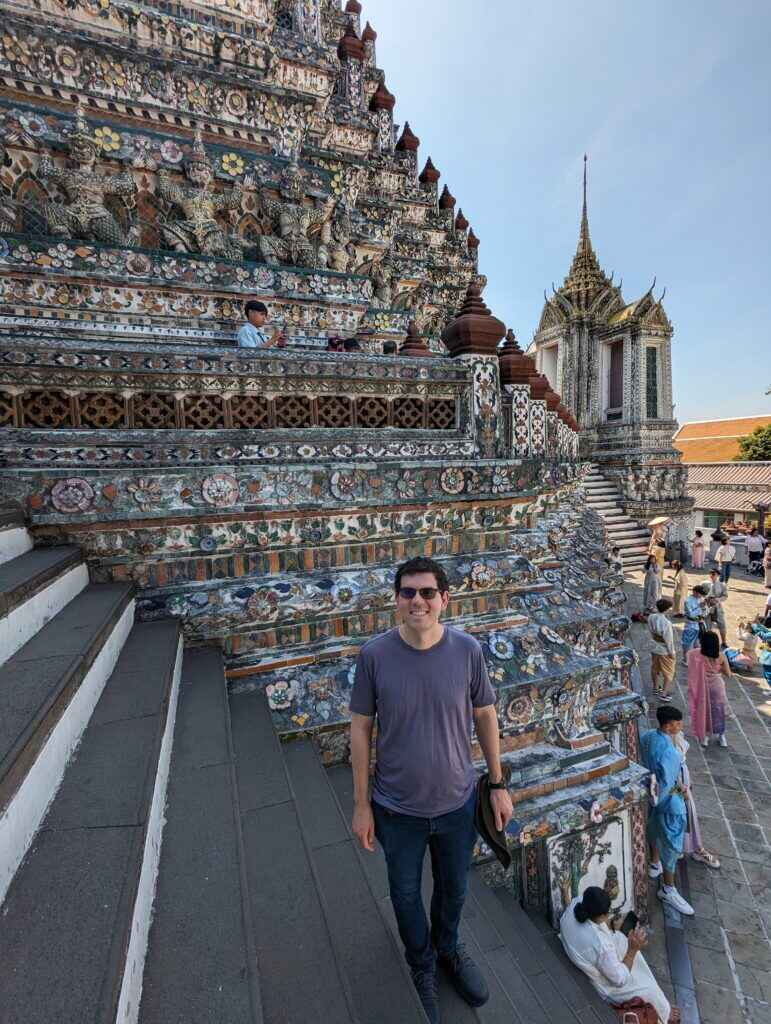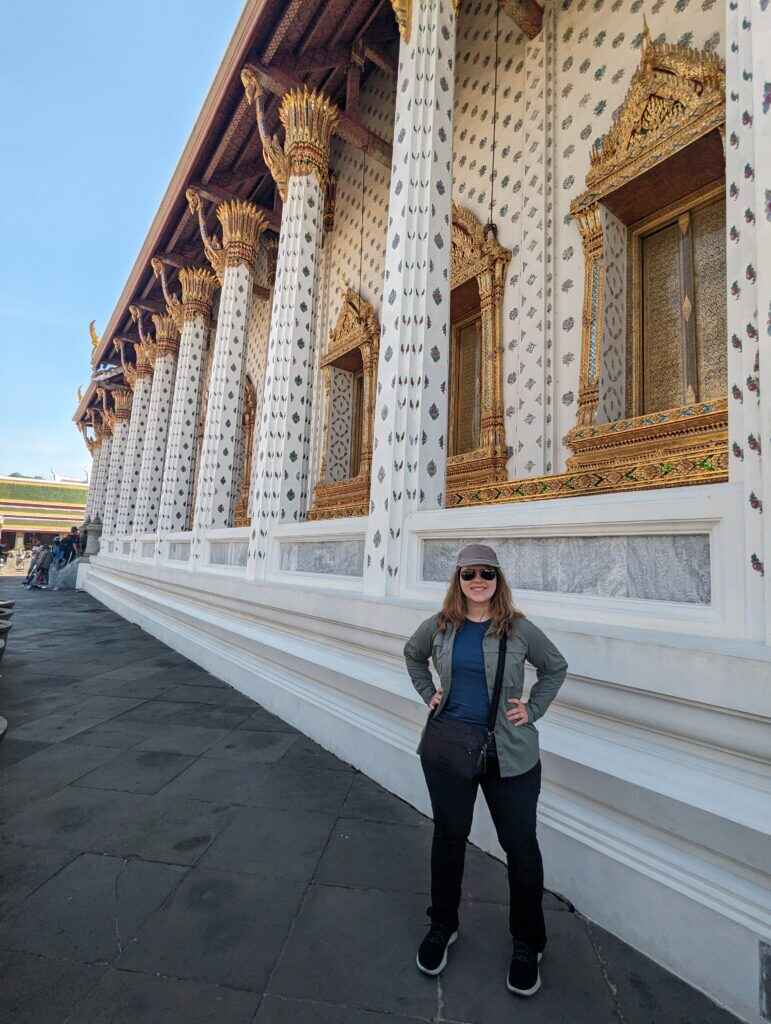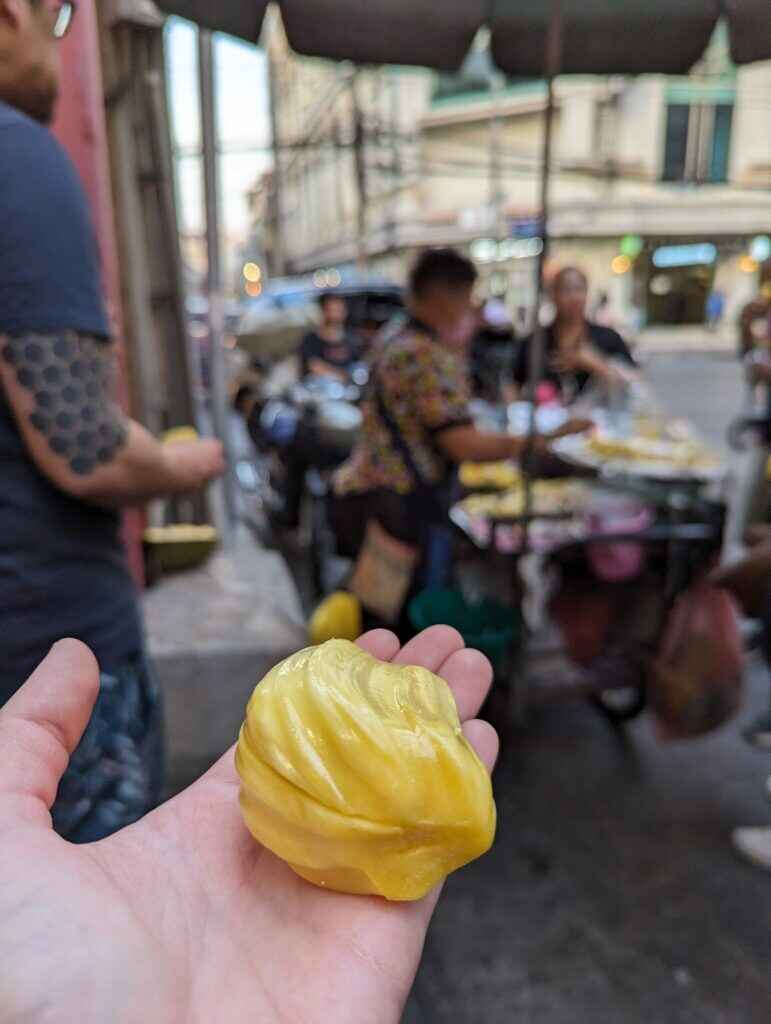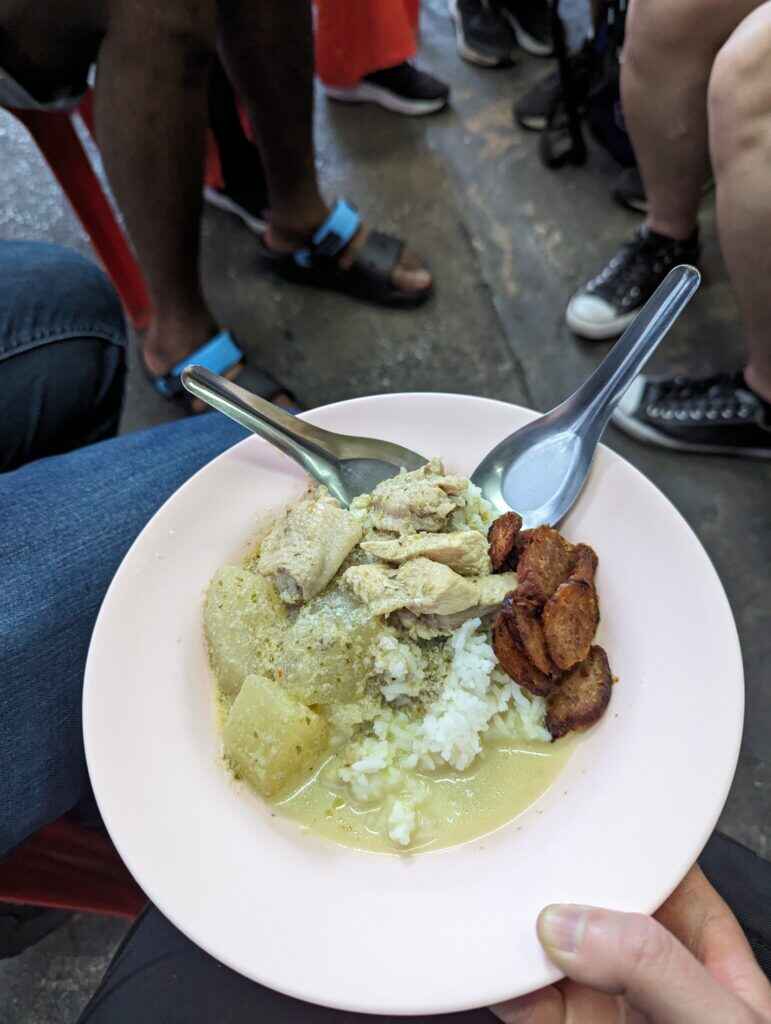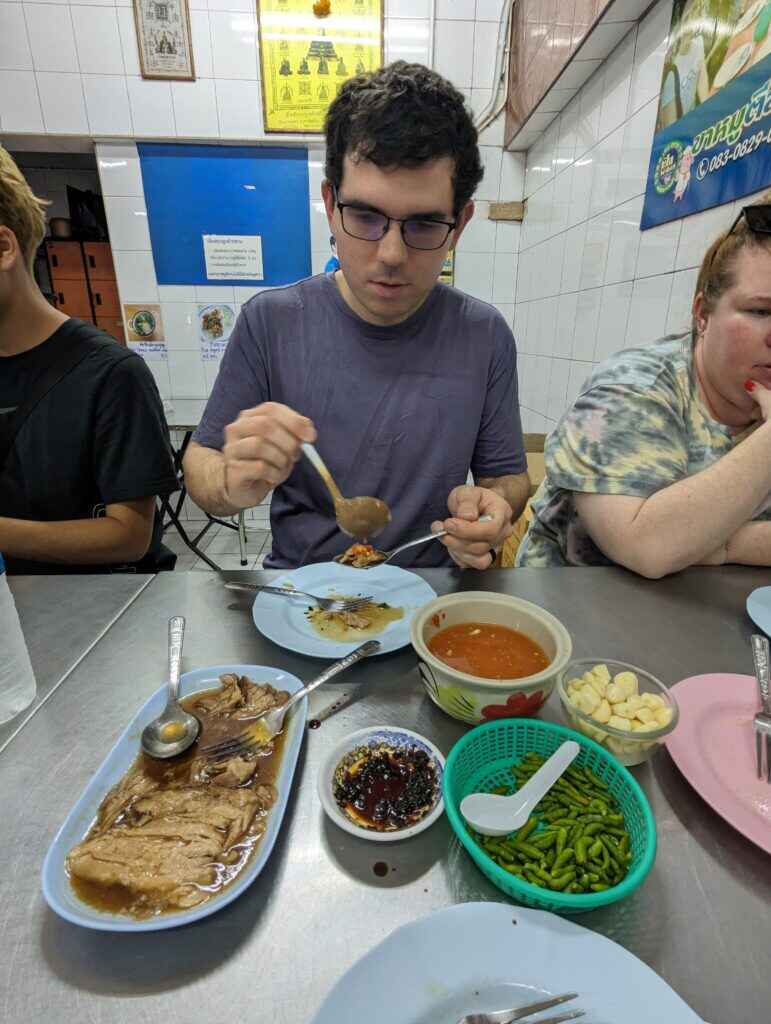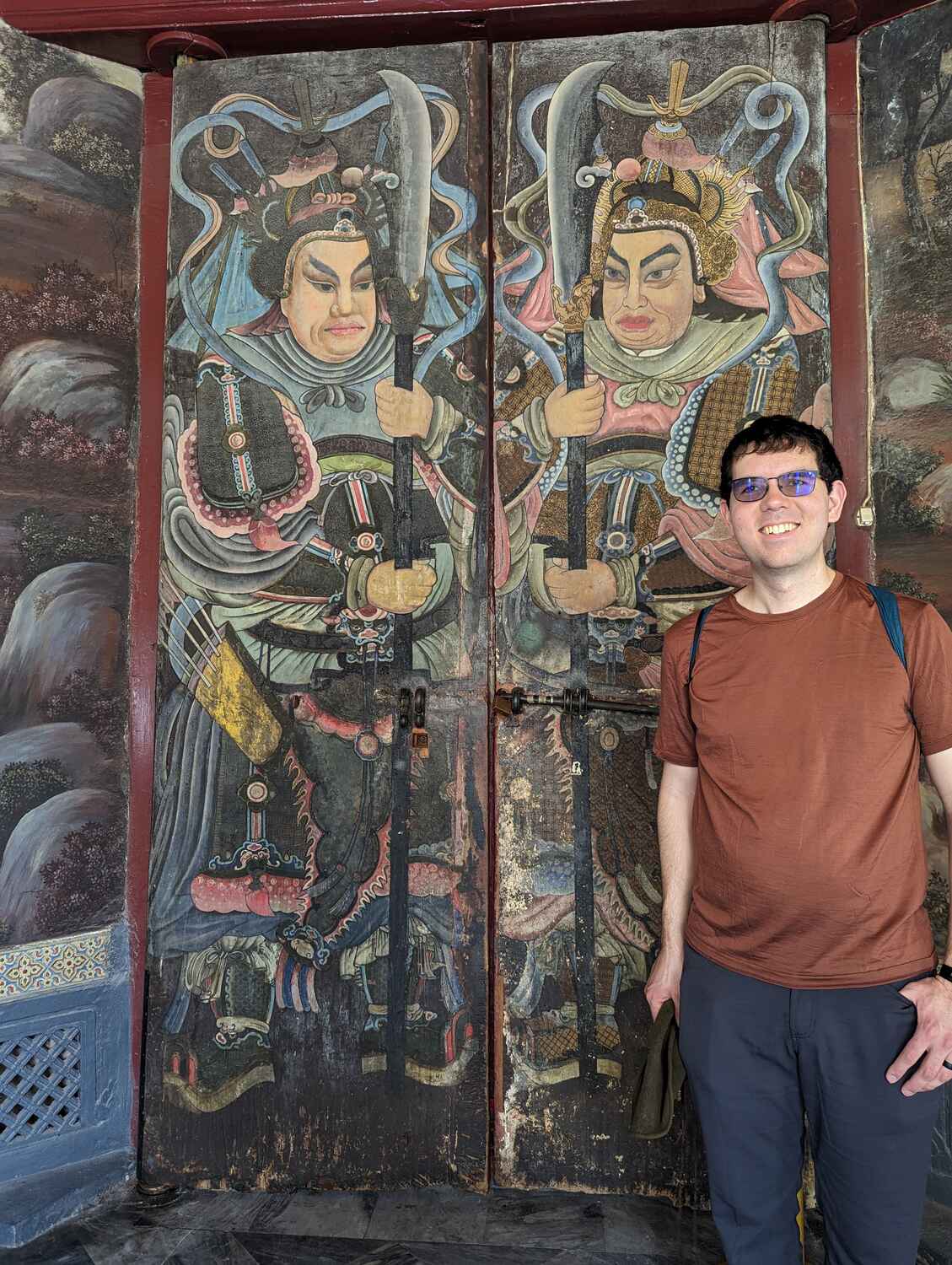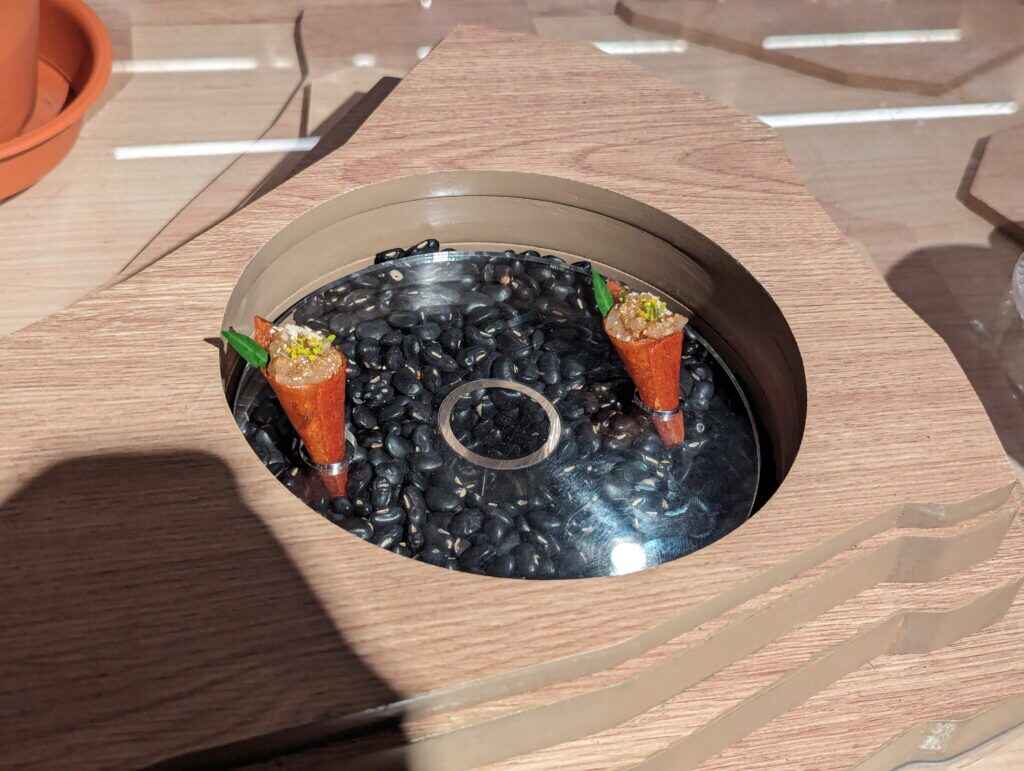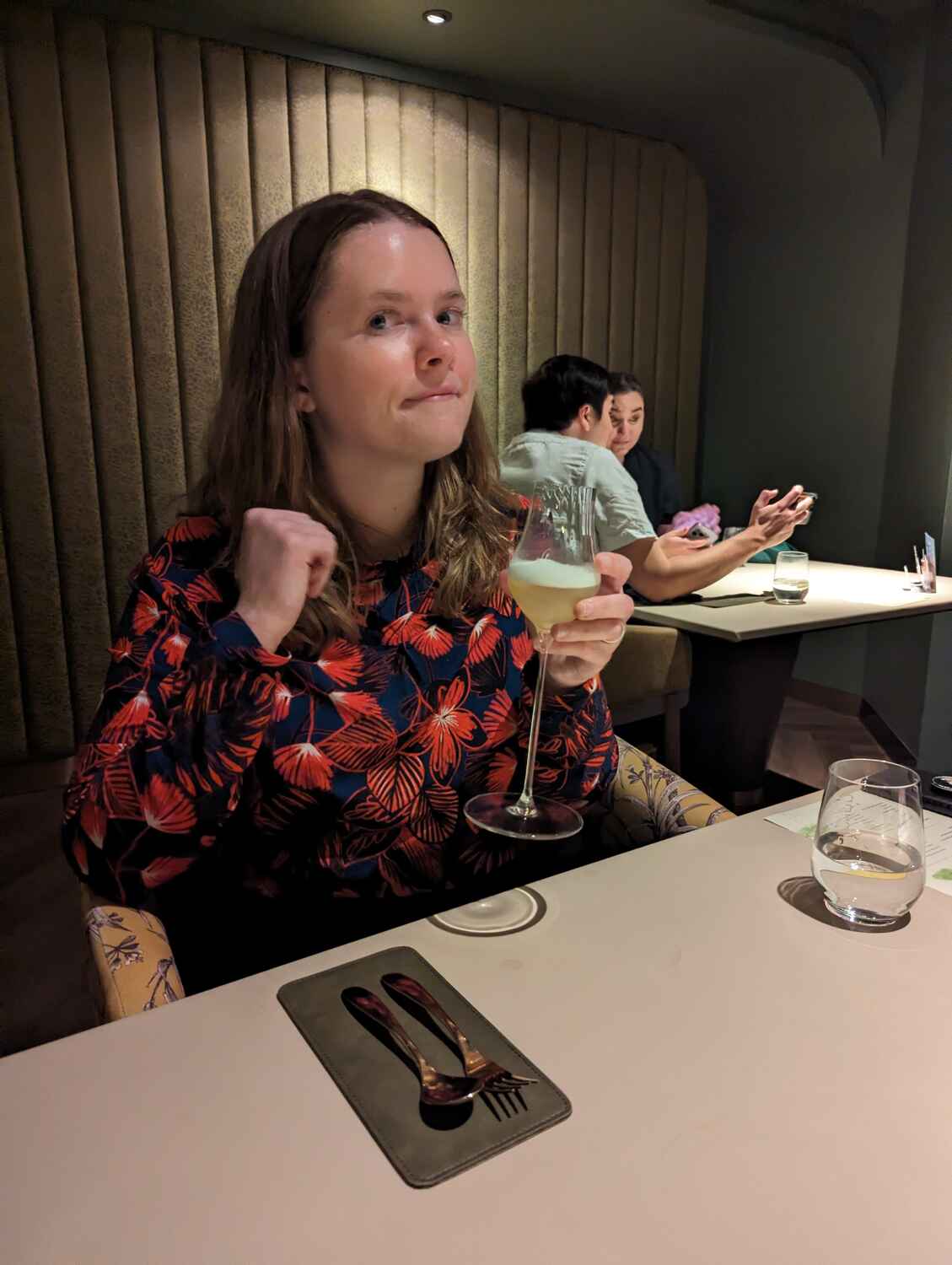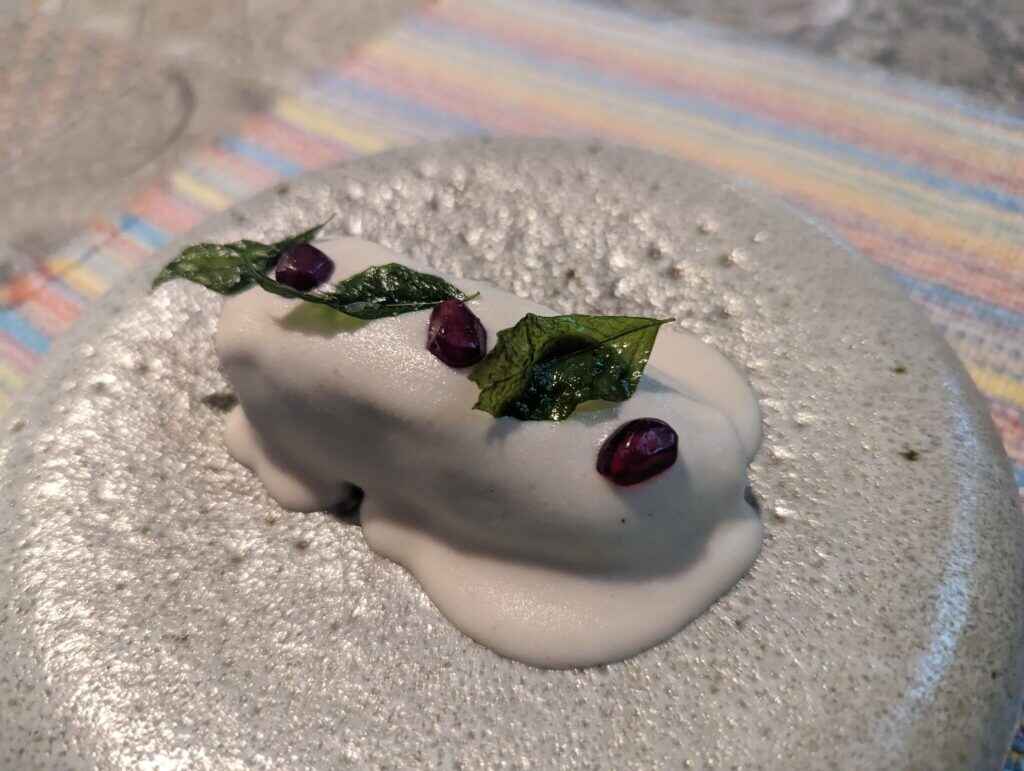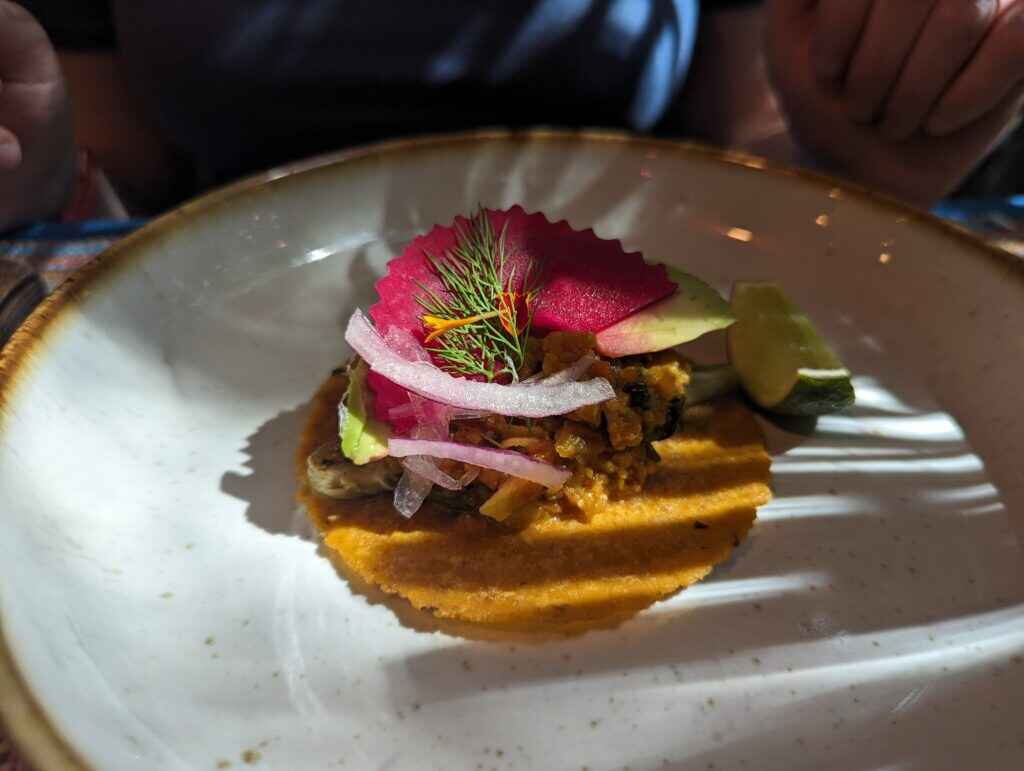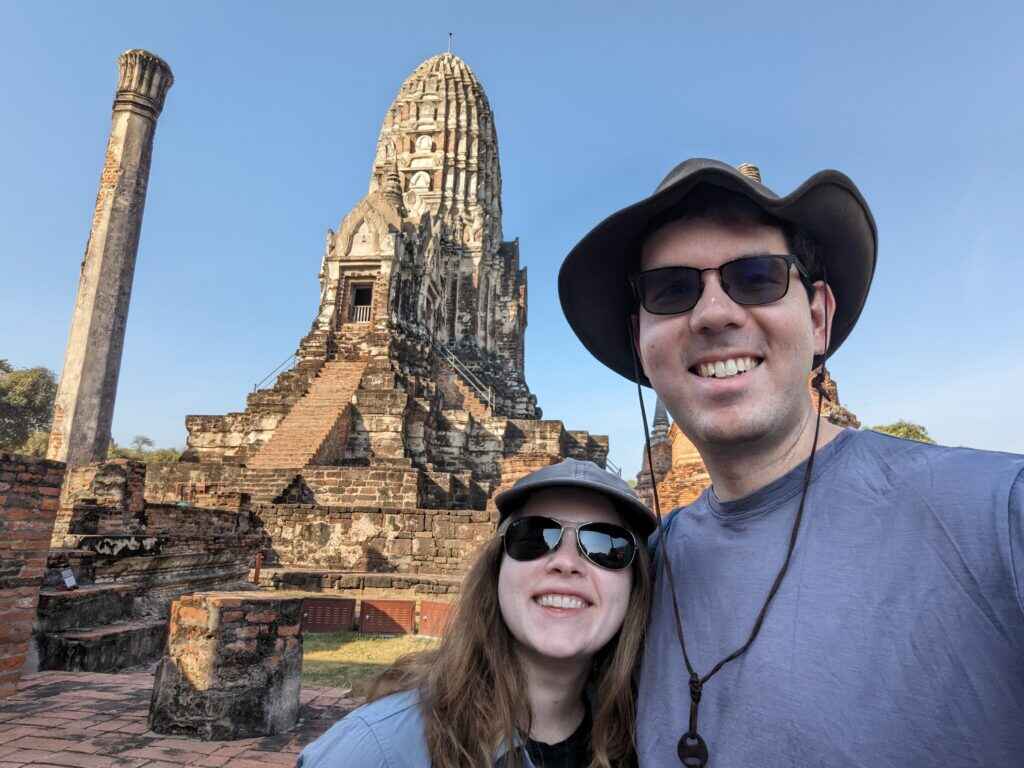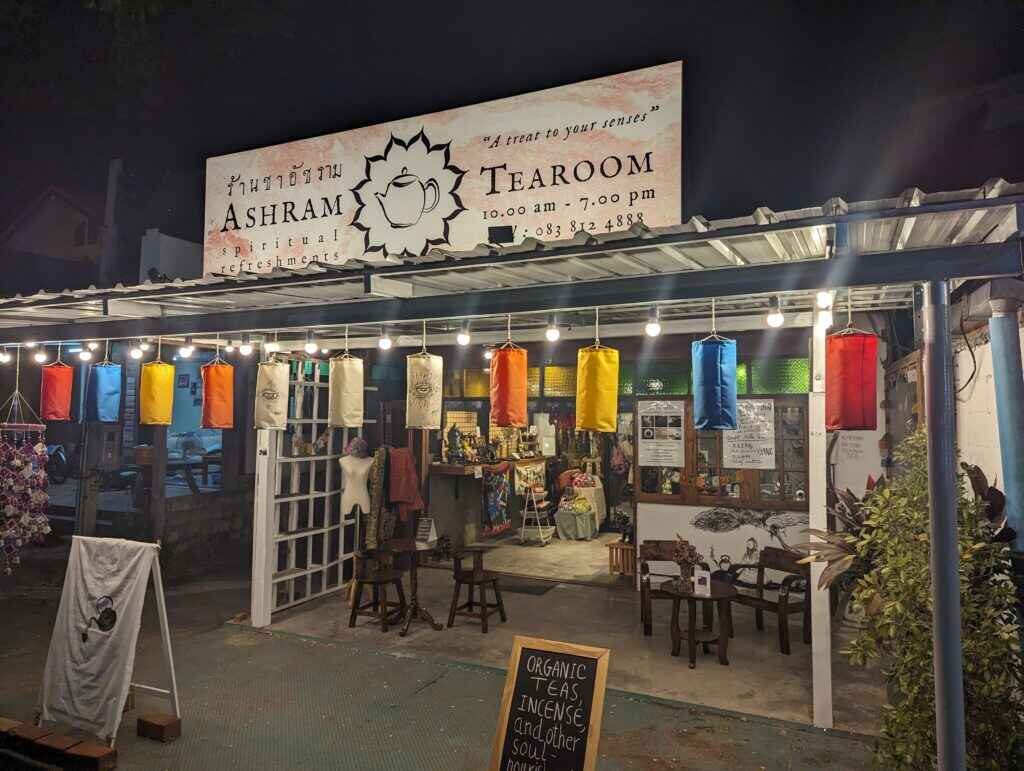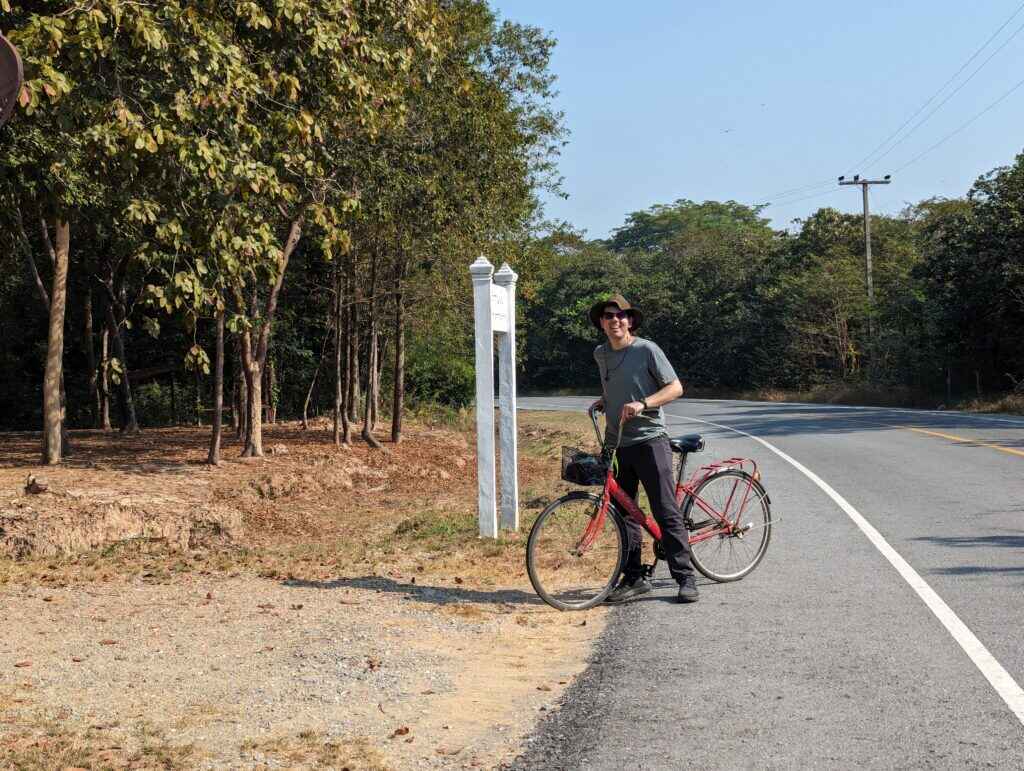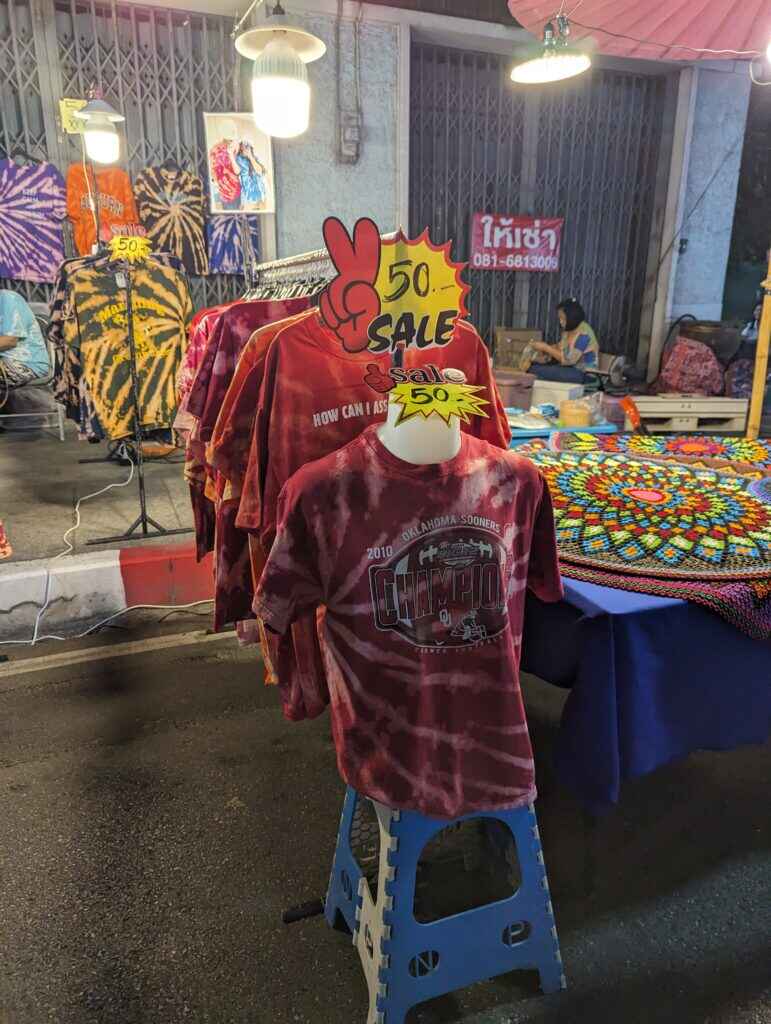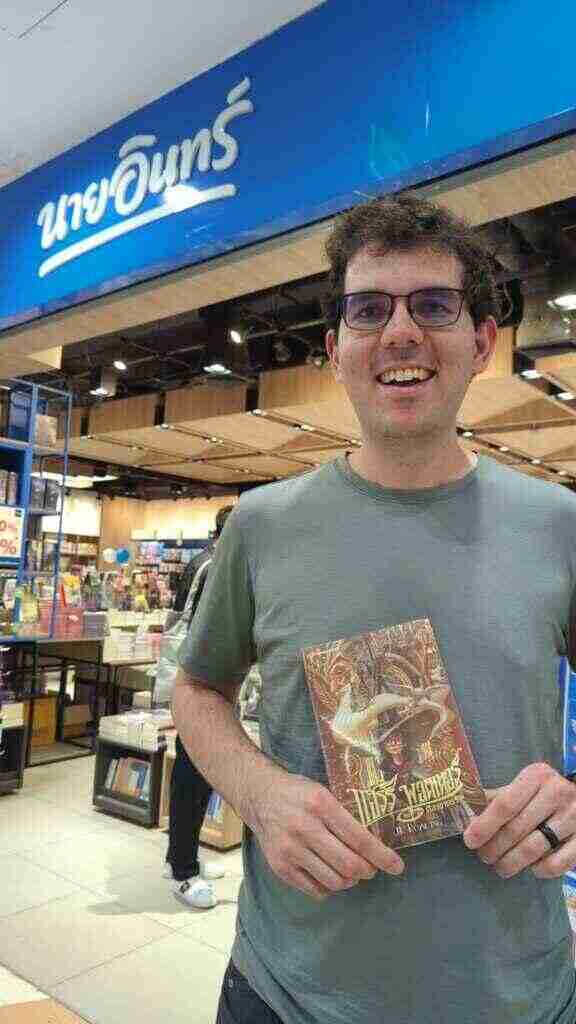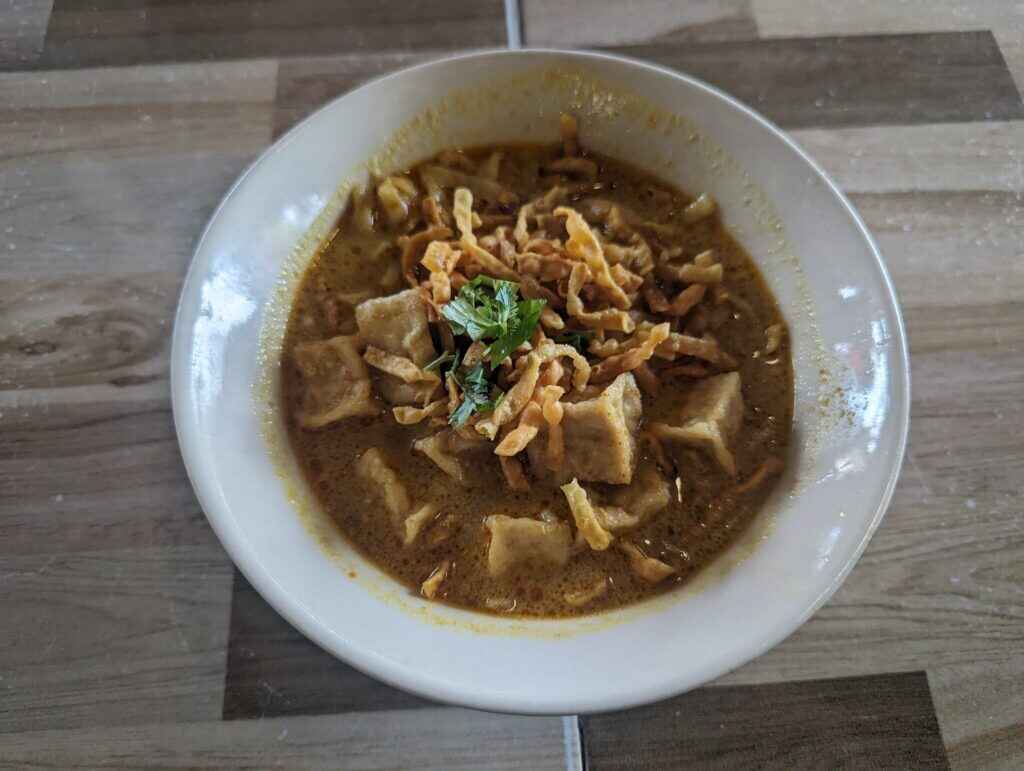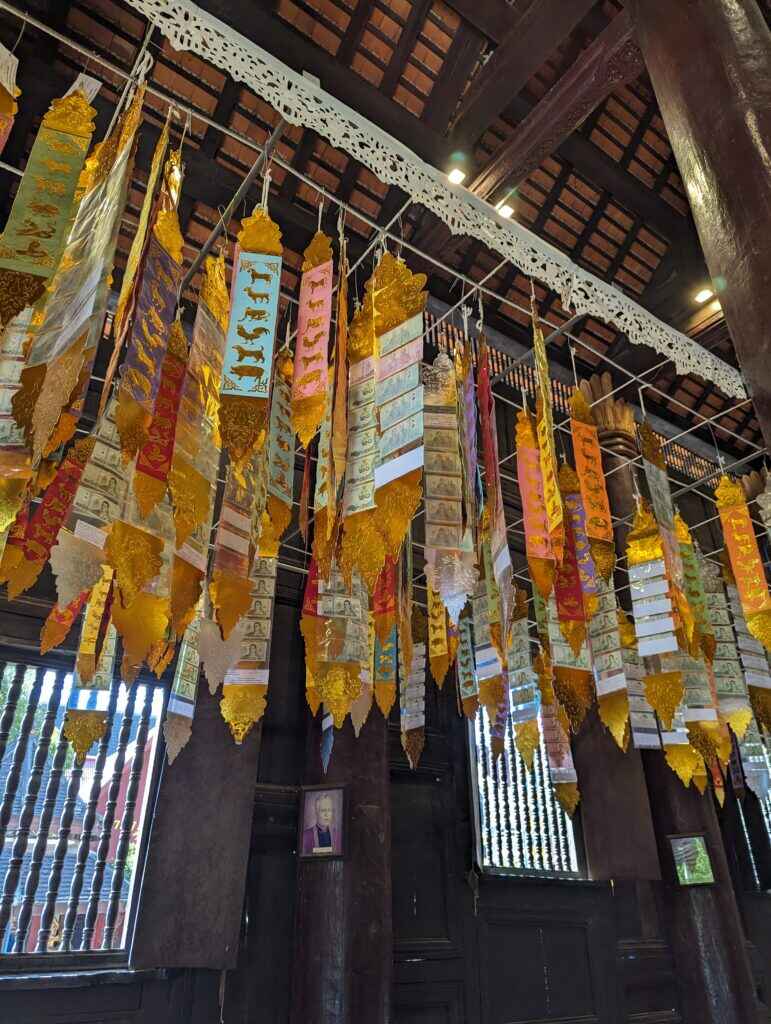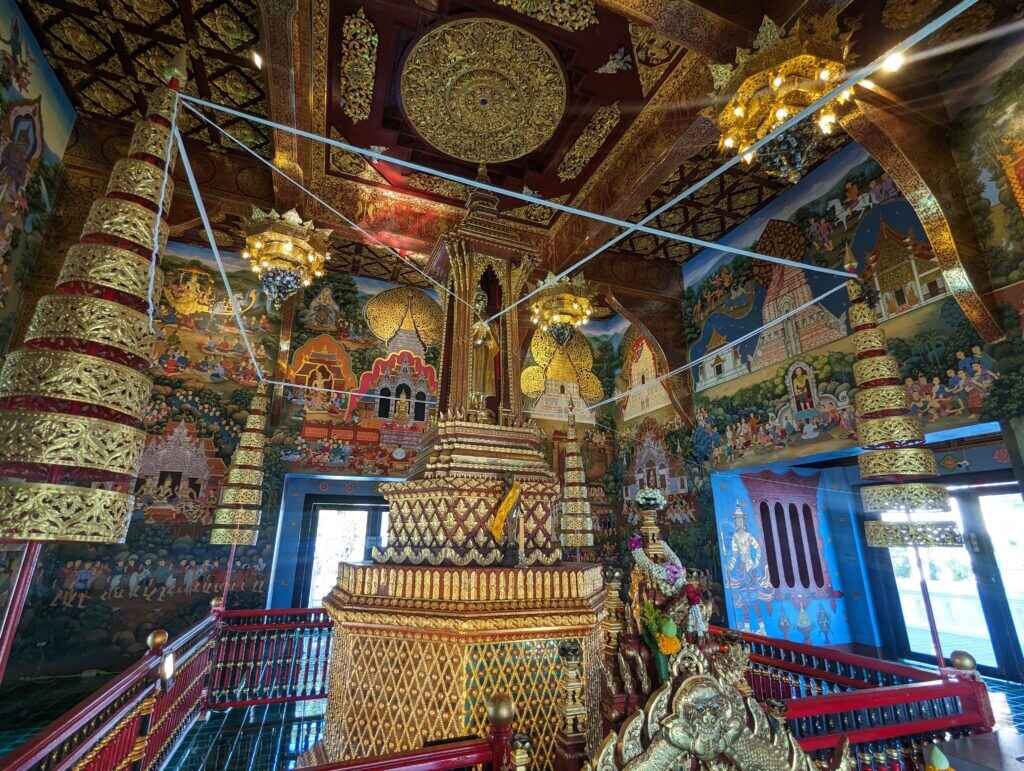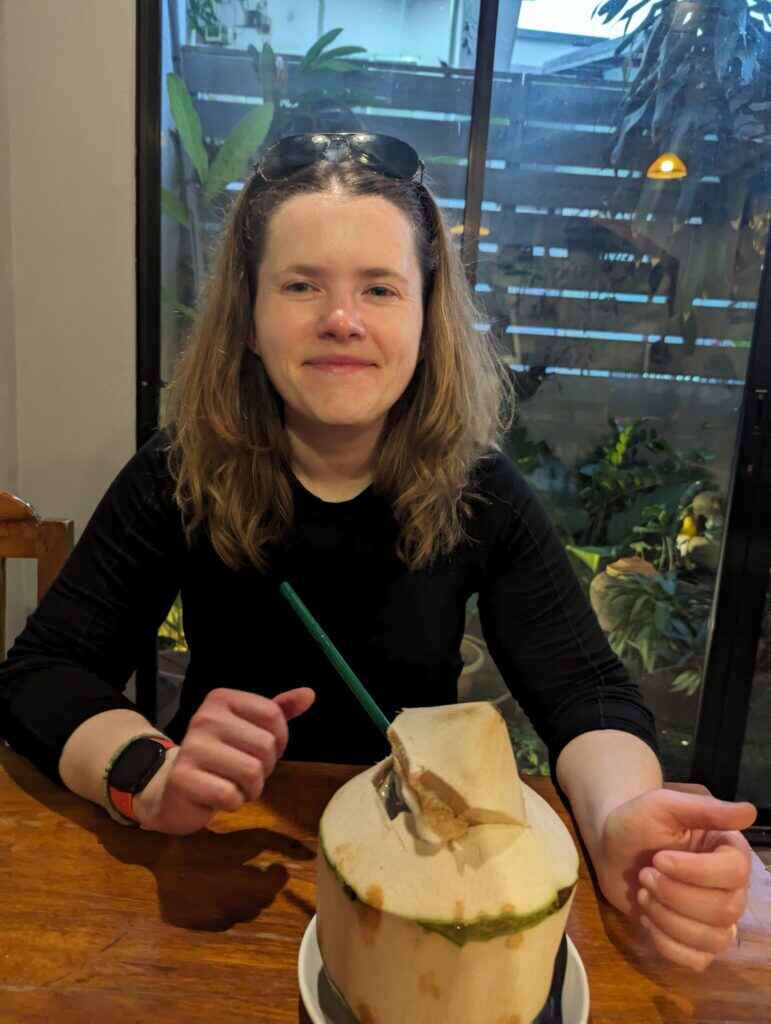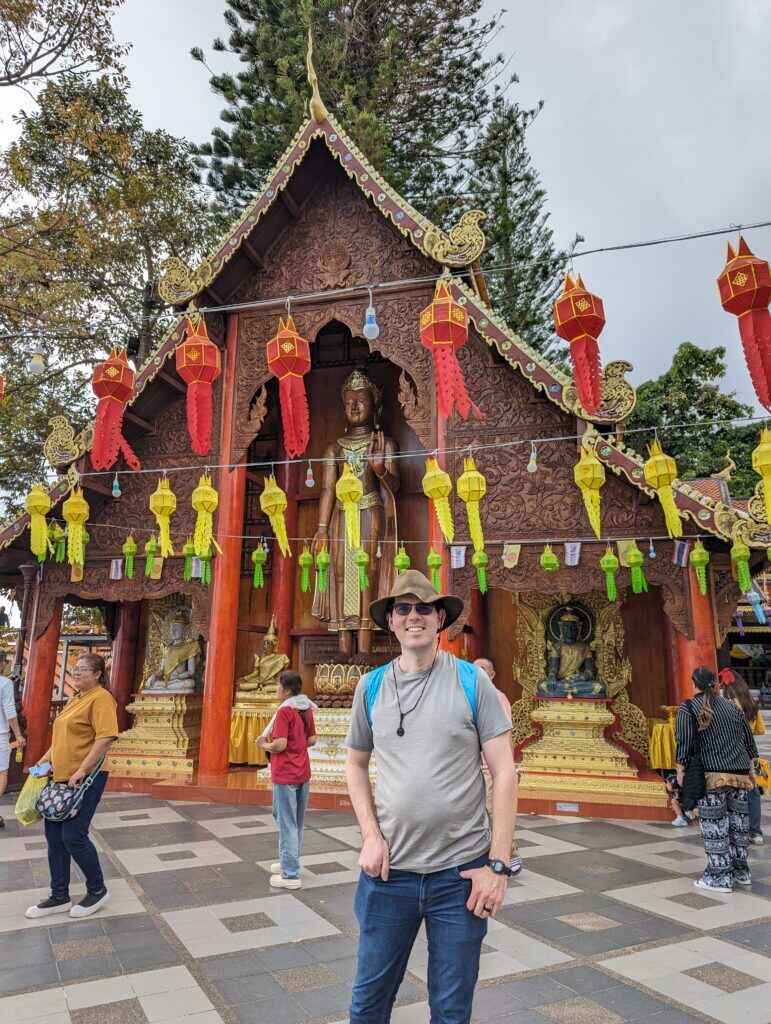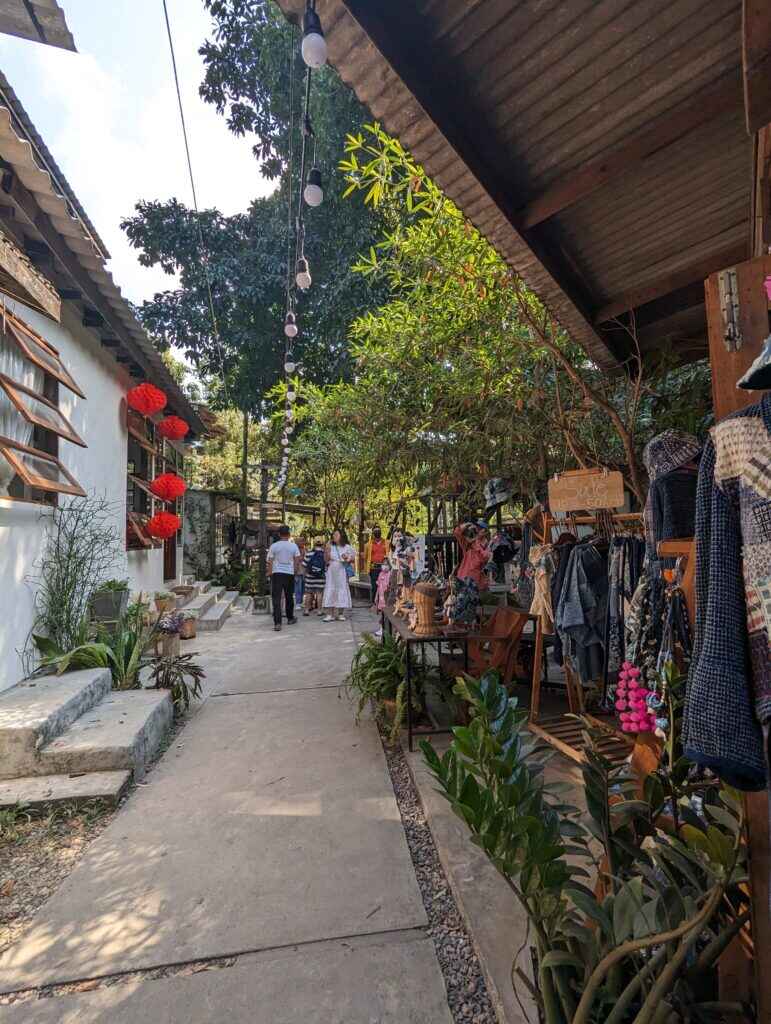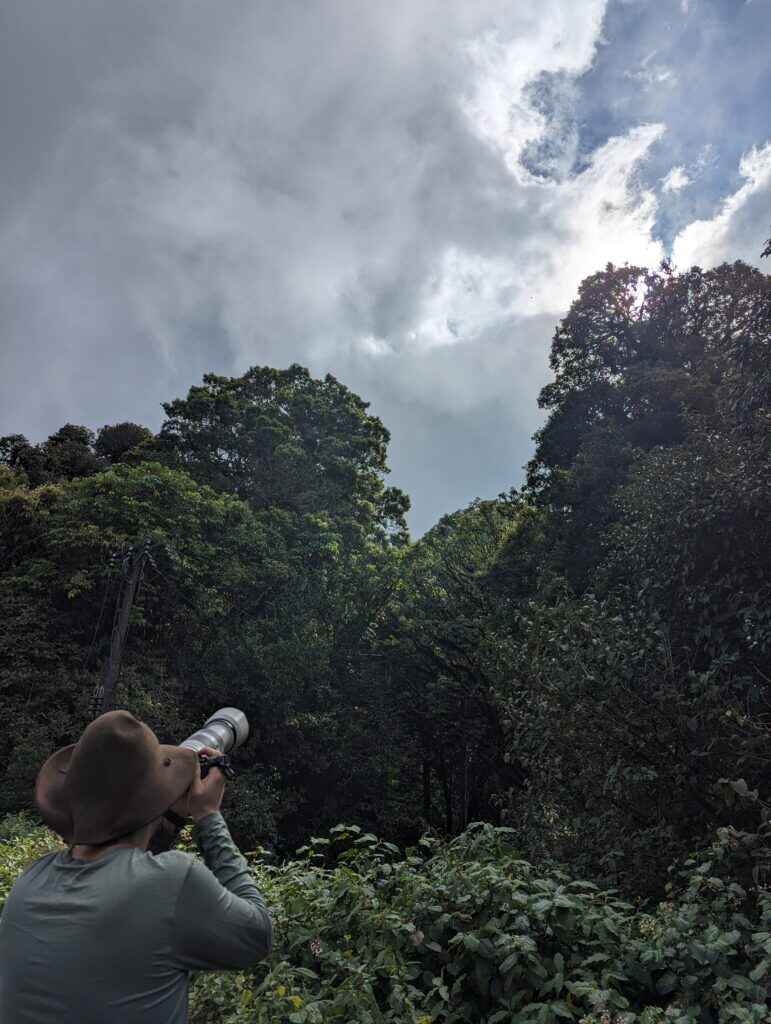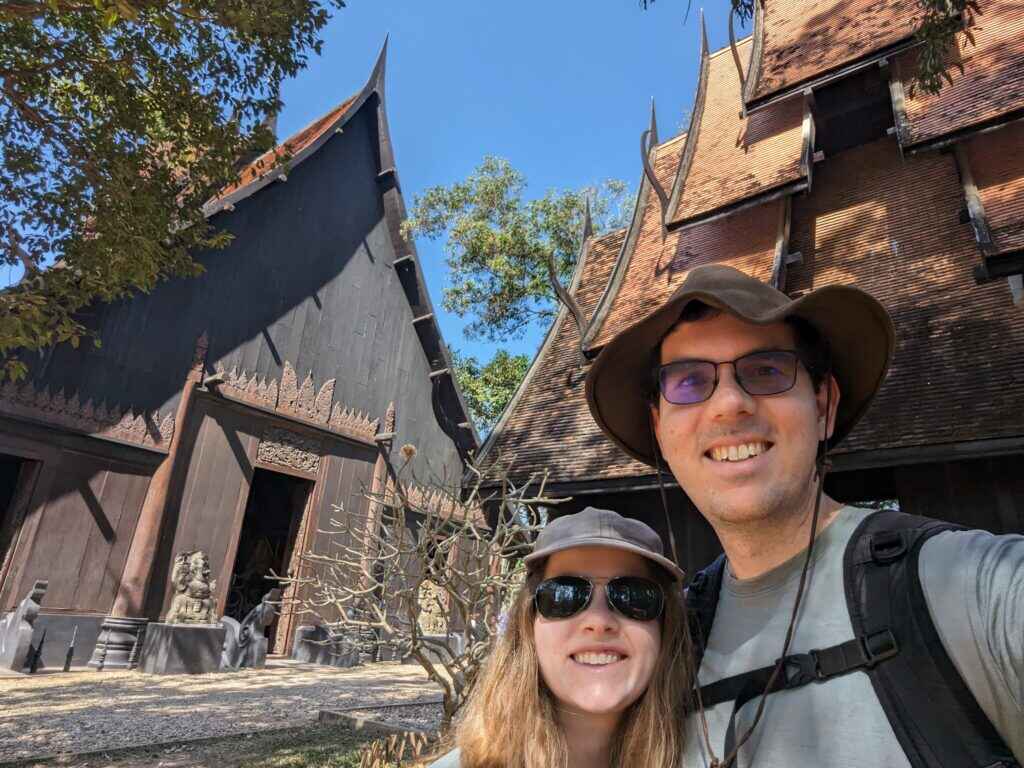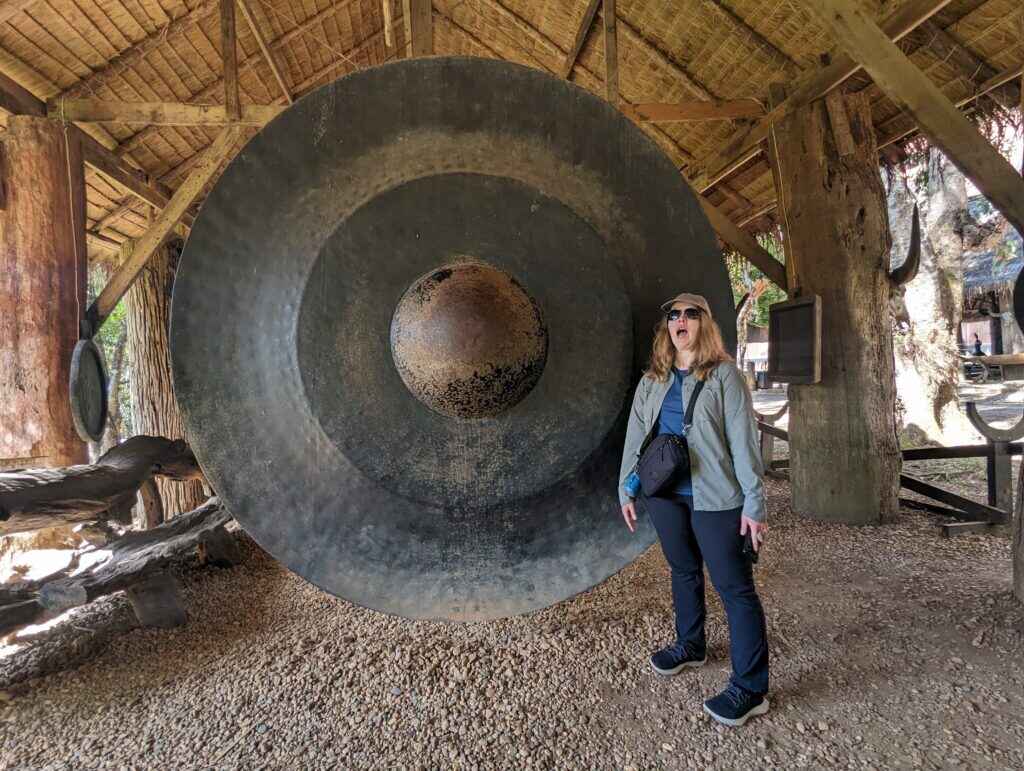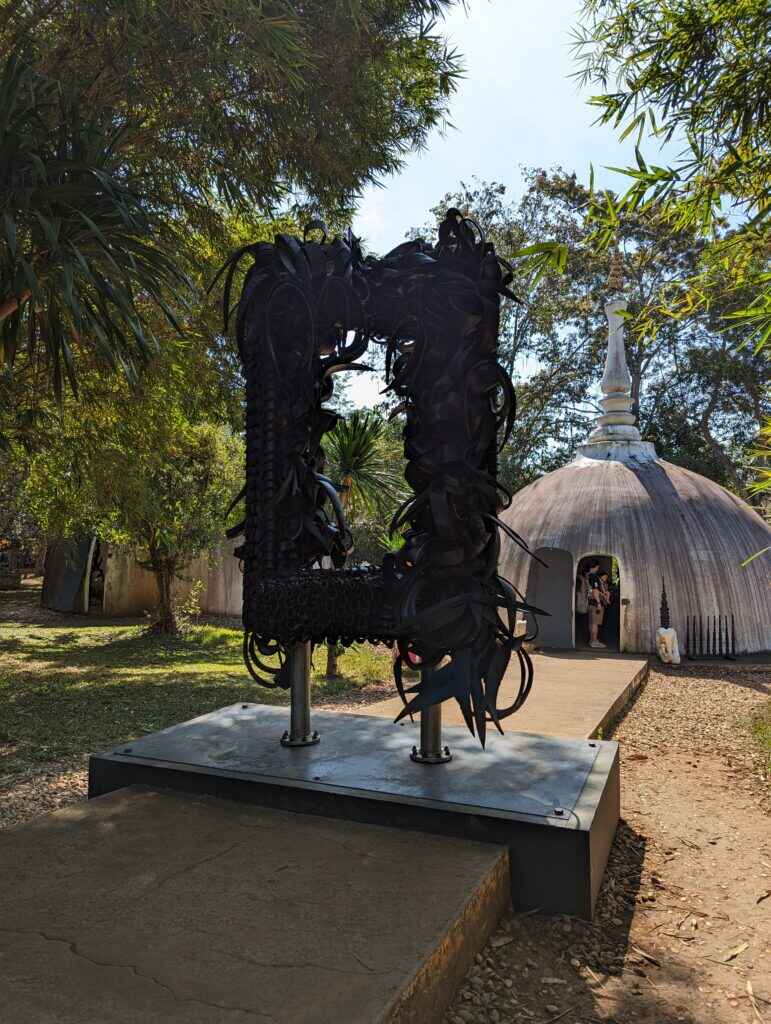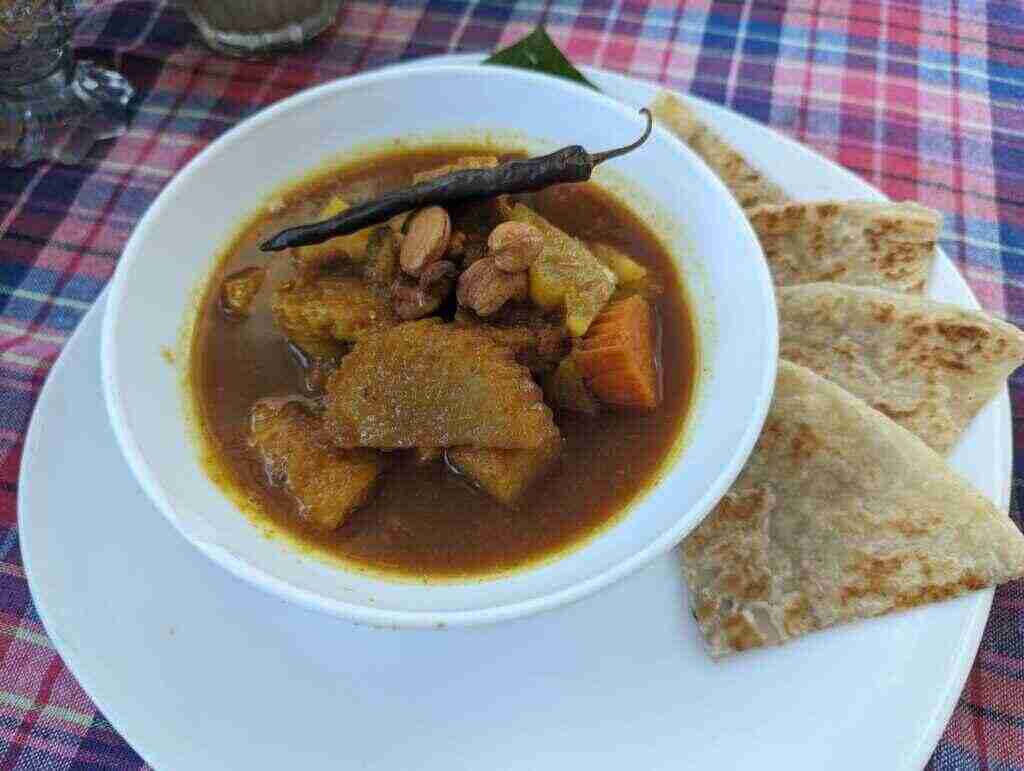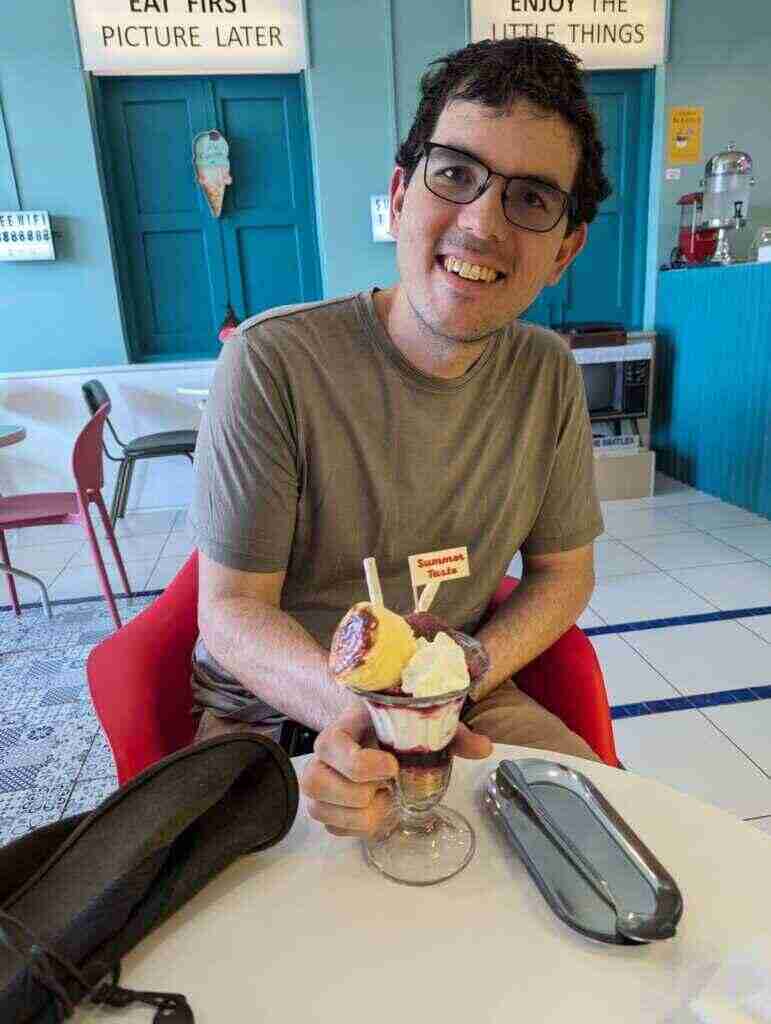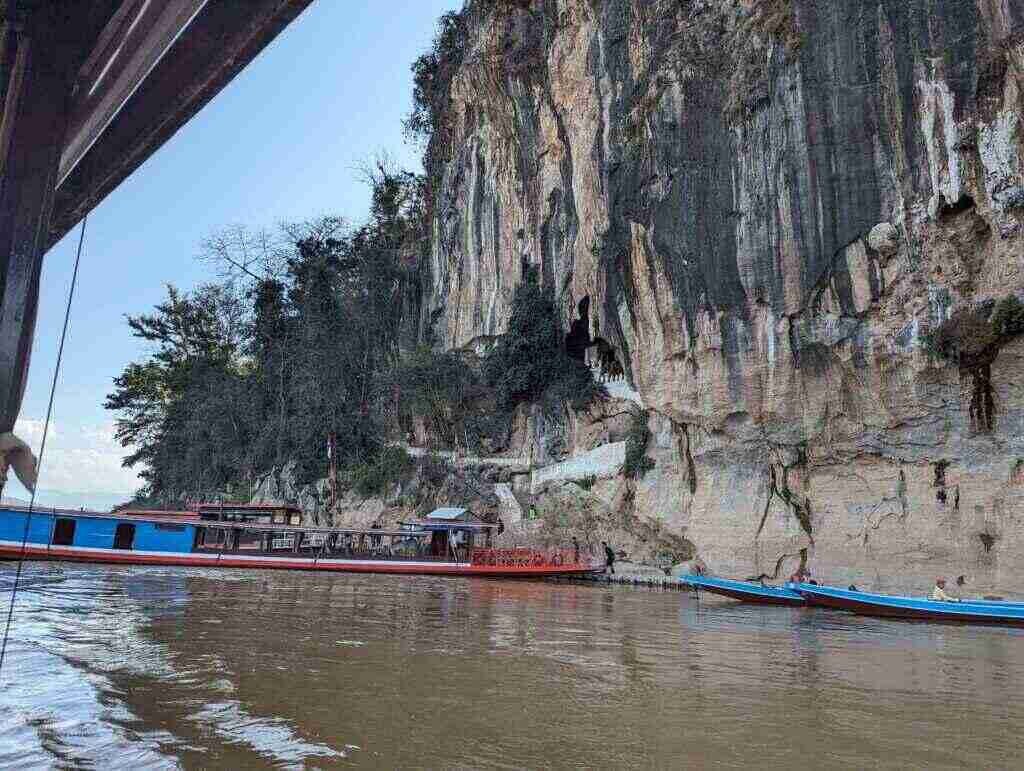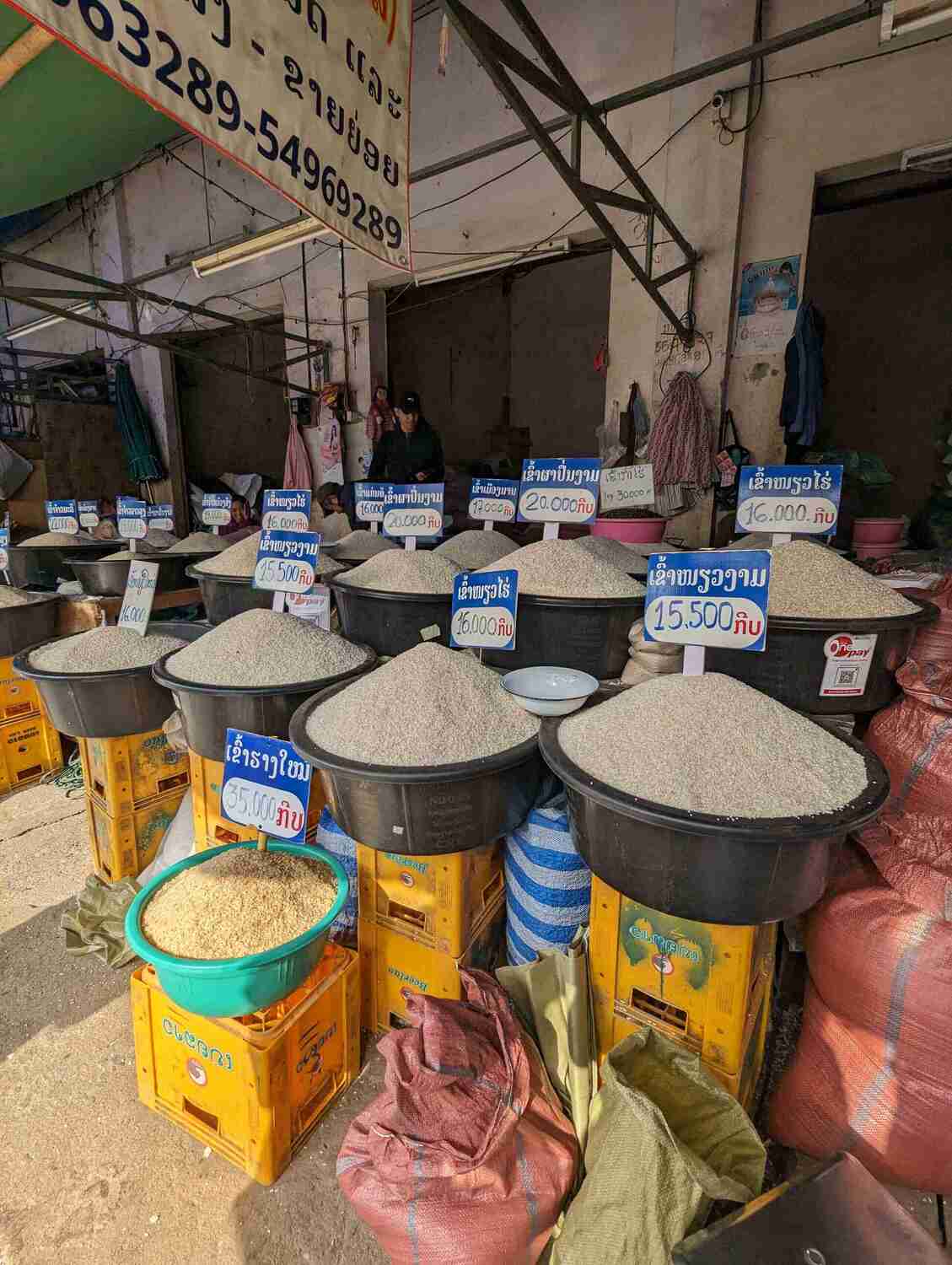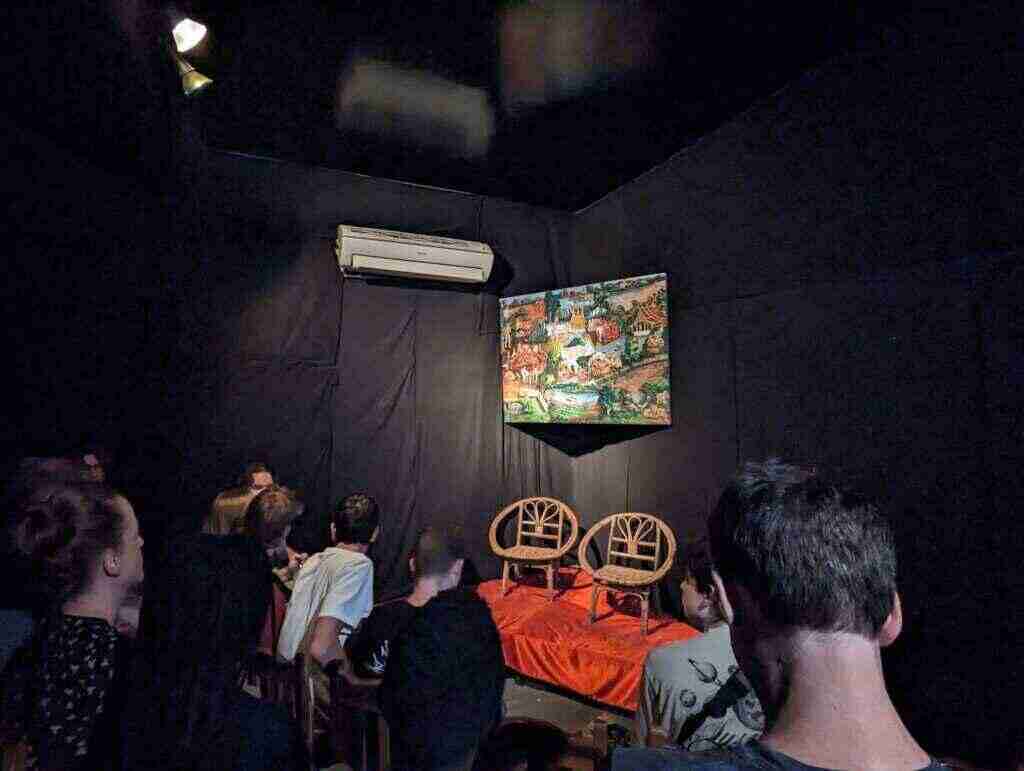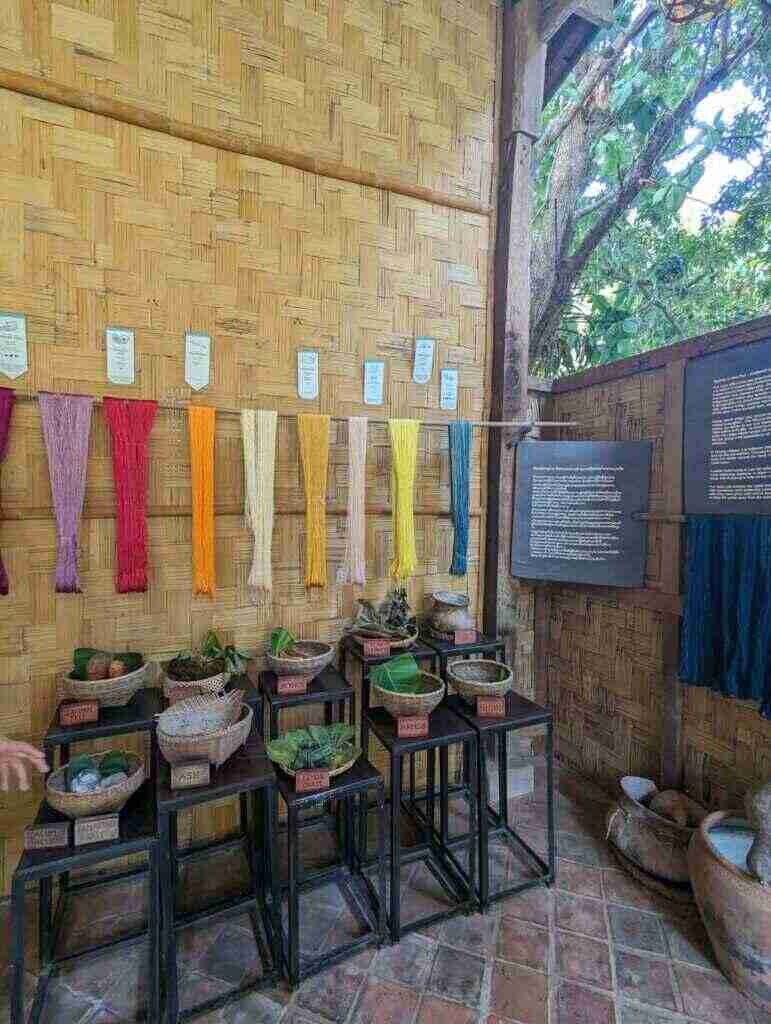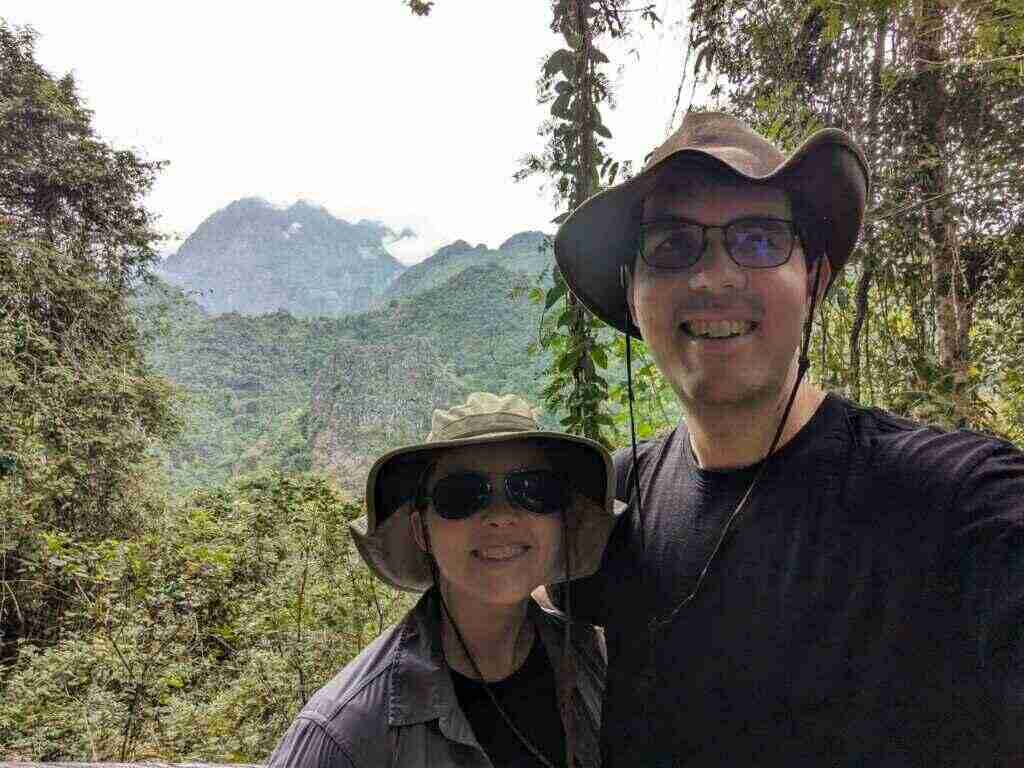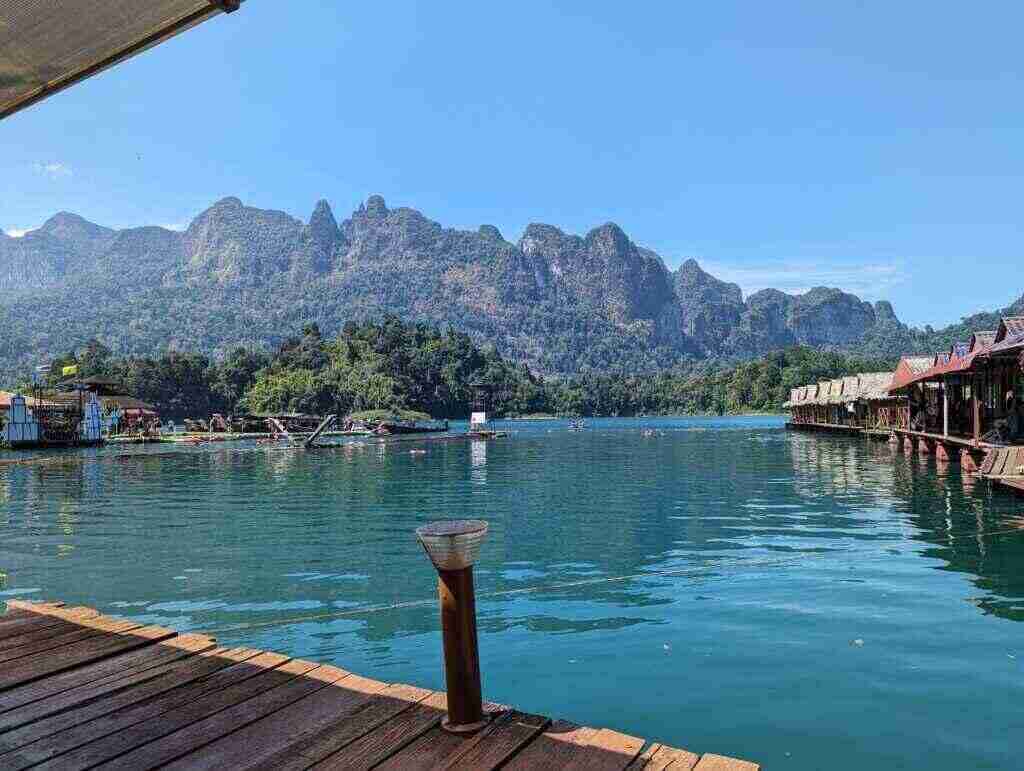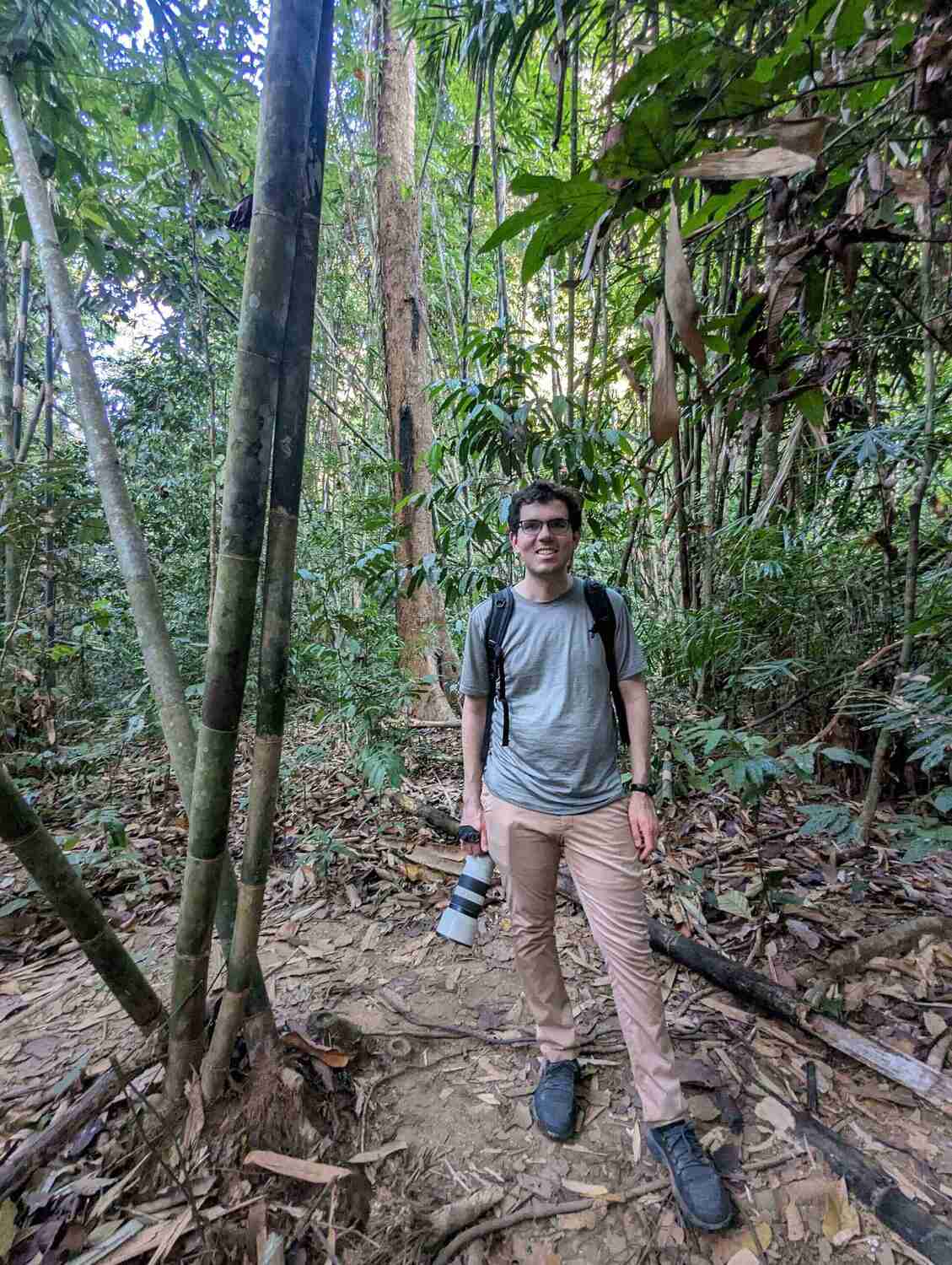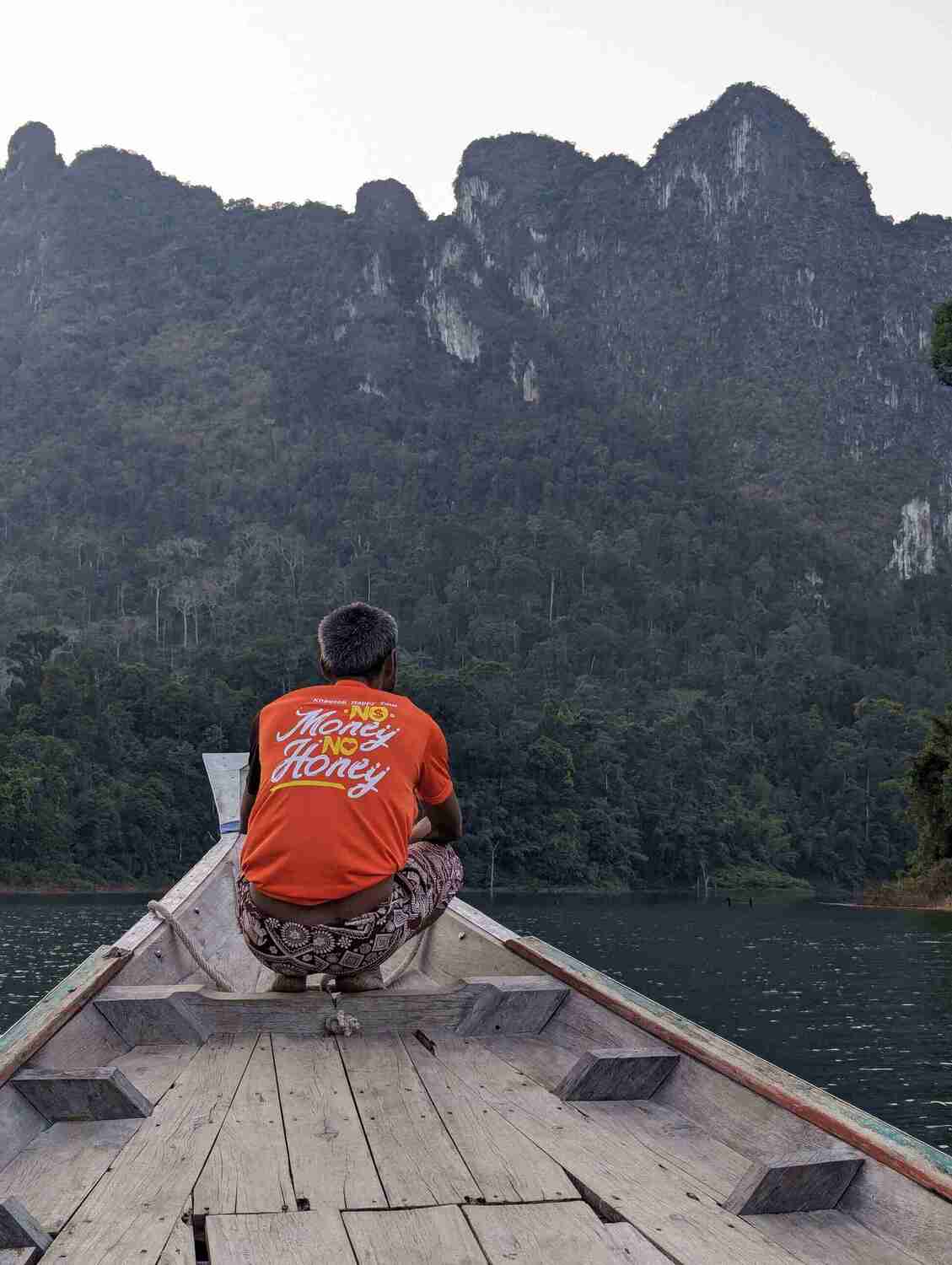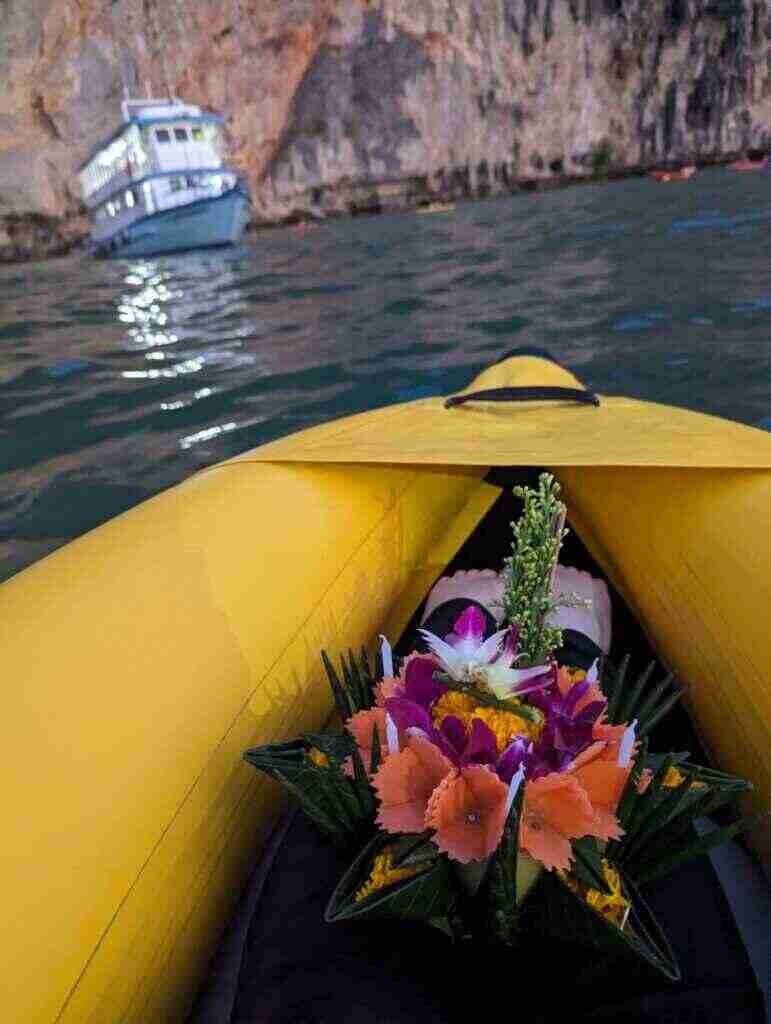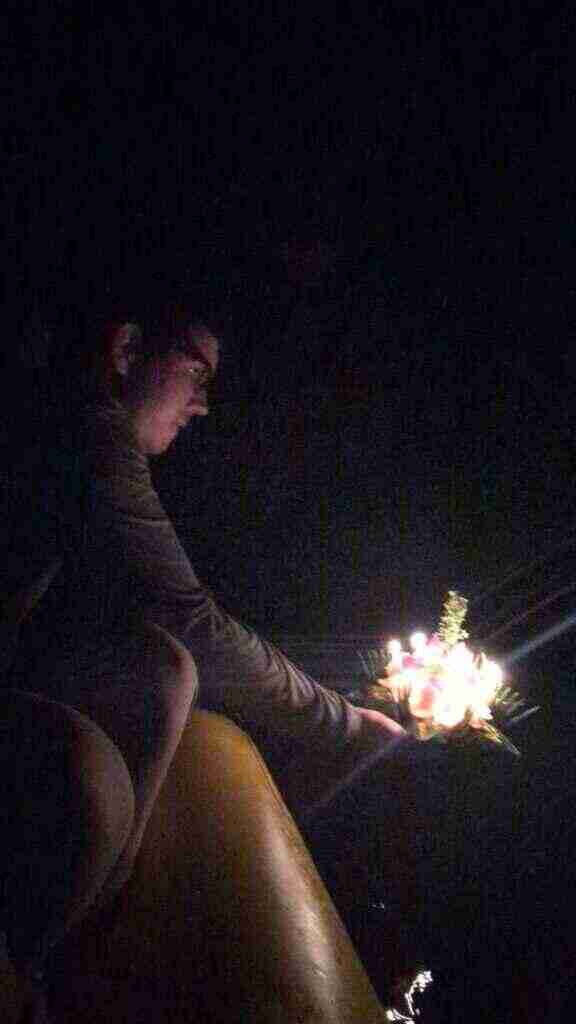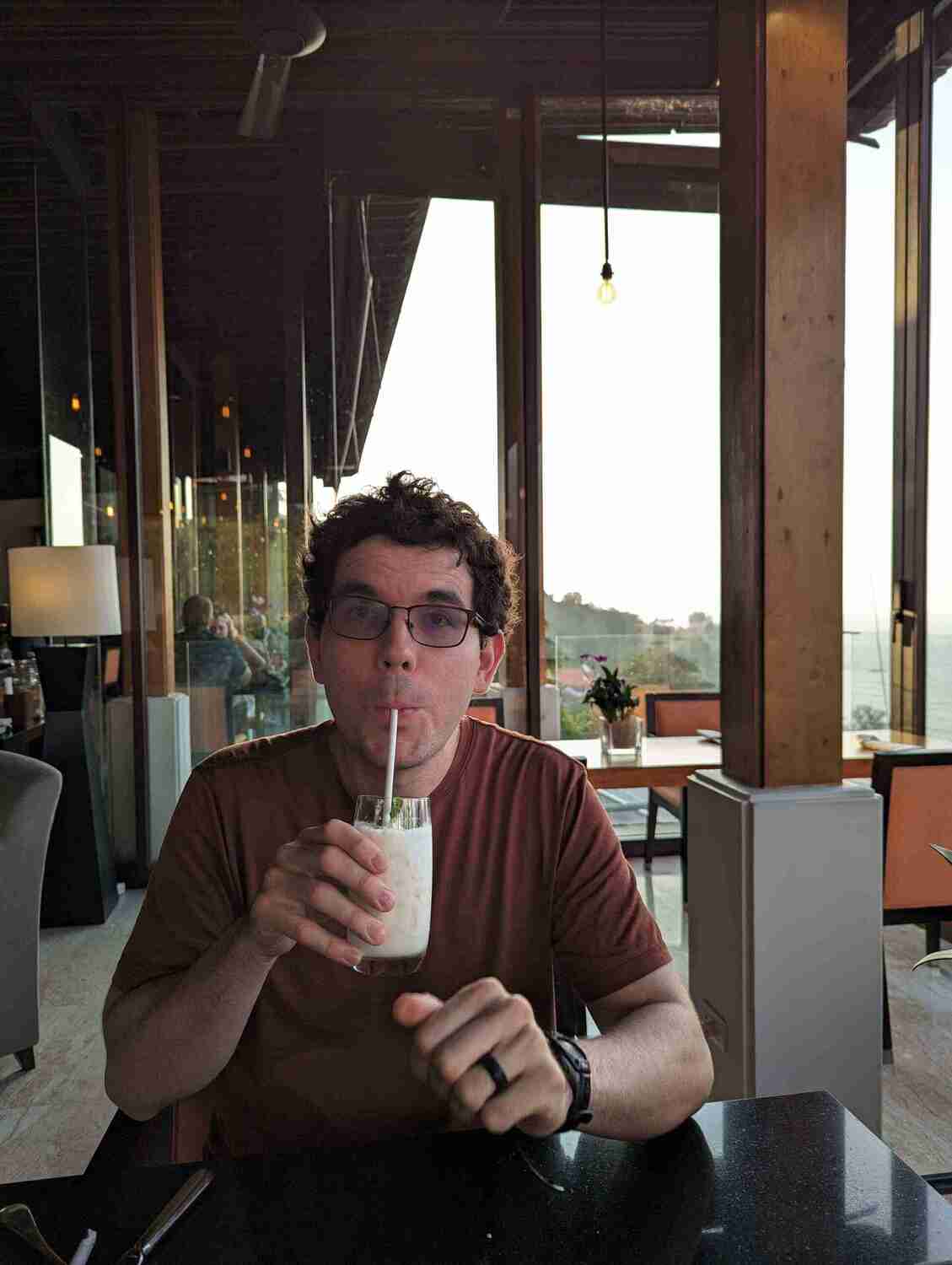Southeast Asia is full of travelers of all backgrounds – 18-year-olds on gap years wearing elephant pants, families exploring with their kiddos, solo travelers relaxing in the countless cafes, foodies enjoying some of the best street food in the world. There is something for everyone to explore, enjoy, and appreciate – one of the things I love about this part of the world.
Bangkok
I visited Bangkok in 2017 before heading on to Cambodia and Vietnam, but Carey had never been to SE Asia.
Bangkok is a massive city and sites are quite spread out. Even with a well-placed (and very cute) hotel, cabs were our friend. Thankfully we could catch a cab to most sites for about $3 – $5 (or walk about an hour – I bet you can guess which option usually won in 95-degree heat).
A few highlights from our time in Bangkok –
The Family is a restaurant that doesn’t look like much, but the food is absolutely amazing. We went there for dinner our first night in town and had some of the best curry of our lives (for about $8).
Wat Arun is one of the most iconic temples of Bangkok. It is right on the river and we were able to take a quick ferry across the river to reach Wat Pho.
Wat Pho is my favorite temple in Bangkok. It is home to the 150-foot-long reclining Buddha and is absolutely beautiful.
Bangkok is home to a large and bustling Chinatown. I hadn’t visited this part of town on my first visit to Bangkok and loved exploring it this time! We went on a street food tour and had a great time. Everywhere we turned there seemed to be a new street food stall with a Michelin Guide recommendation. On our tour we tried over 15 dishes. Our favorites were the green curry at Jek Pui (featured on the Netflix Street Food special), pork satay with the best Thai peanut sauce of my life, and Chinese donuts from a Michelin-recommended stall.
The Grand Palace is the top site in Bangkok. It was built in the 1700s and was the residence of the King until 1925. It is a stunning, and packed, place to wander. Our favorite element is the impressive murals, depicting the battle between the king of the demons and the human king.
Thipsamai is known as one of the top pad thai restaurants in Bangkok (and therefore the world). It has been in the Michelin guide a few times and usually has a fairly long line. The line moves fast since everyone inside is slurping up delicious pad thai and it is well worth the wait. I visited on my first trip to Bangkok and have compared all other pad thai to theirs since. This time we also tried their legendary orange juice and it was the best I’ve had in my life.
Nusara is ranked as the 3rd best restaurant in Asia at the moment and is listed in the Michelin guide. The founder is also the founder of Le Du, currently the number one restaurant in Asia, and he started Nusara as a tribute to his grandmother. They serve creative takes on traditional Thai dishes and all ingredients are from Thailand. We had a delicious dinner with a lovely Thai tea pairing. We particularly loved the blue swimming crab curry with horseshoe crab roe, hokkaido scallop with kaffir lime, and sago with young coconut.
Bangkok is full of amazing food, with Michelin stars distributed to street food vendors, fine dining establishments, and everyone in between. Ms. Maria & Mr. Singh is a more casual fine dining place I was dying to try. The restaurant was started by Gaggan Anand, a famous chef who got his start at El Bulli (one of the most famous restaurants of all time). It is a Mexican/Indian fusion restaurant in the heart of Bangkok – combining my three favorite cuisines!
We got their tasting menu and it was delightful. The best courses were the tostadas (akami tuna and chana chaat with mole negro) and tacos (octopus curry with mole madre, pork vindaloo, and eggplant bharta).
Ayutthaya
Ayutthaya is about two hours north of Bangkok by train. It was the capital of Siam (present-day Thailand) until the 1700s when the capital was moved to Bangkok. The original city planning of Bangkok was actually based on Ayutthaya. It was an incredibly successful city from the 1300s to the 1700s.
Present-day Ayutthaya is a fun place to visit. It is full of well-preserved temples built back in the 1300s, cute coffee shops, and a lovely river to wander. During our time in the city we visited six temples in one day while passing at least ten others.
We also got to visit the night market. It was full of crazy food options! Our favorites were the ever-reliable spring rolls, the delicious purple sweet potato donuts, and the odd Green Thai Fanta (a combo of banana, pineapple, and orange).
Sukhothai
Sukhothai was the capital of Siam in the 1200s until the capital changed to Ayutthaya. The city is full of amazing ruins and the majority of the Old City is a UNESCO World Heritage Site. We took a bus from Ayutthaya (a shockingly comfortable and common way to travel around Thailand) and got to see some of the countryside.
Once we arrived we wandered the town. At dusk, the streets fill with street food vendors, and the temples are beautifully lit. While sampling some street food we came across a tea shop. Carey loves tea so we stopped by the shop and ended up spending over an hour talking to the fellow in charge.
This man loves tea. He knows just about everything there is to know about tea and shared some of his knowledge with us while we enjoyed some lovely masala chai and pu-er.
The next morning we rented bikes and explored the ruins. There were a lot of ruins to be seen! We biked about eight miles and only explored two-thirds of the park. While it is feasible to walk, it is a lovely place to bike and far more enjoyable that way.
While taking a short coffee break, we met a monk and a fellow year-long traveler. We enjoyed coffee with them and were invited to the monk’s temple for meditation later that day.
The monk did not think there was any way we would show up to his meditation class. Though it honestly may have been better if we hadn’t since Carey became ill with food poisoning right as meditation was going to begin.
The monk was incredibly kind and helpful. He helped us find a cab back to our hotel, offered to go to the hospital with us and act as translator if needed, and checked in on Carey multiple times.
Chiang Mai
Carey was feeling good enough to make it through the five-hour bus ride to Chiang Mai the next day. By the time we got to Chiang Mai, we were both feeling rough and were incredibly grateful for a hotel with easy access to Gatorade and a way to watch movies for a day or two.

One thing I love about Chiang Mai is its relaxed culture. While I hated wasting time being sick in our hotel room, Chiang Mai is a place people come to relax and unwind. The city has an insane number of great coffee shops, lovely shops to peruse, and used bookstores all over the place. It was almost like the city was telling me to enjoy my book, drink my good coffee, and relax.
After we got to feeling better, we spent our time wandering wats, eating delicious vegan food from the city’s impressive number of vegan restaurants, exploring night markets, getting massages, and drinking smoothies.
One day we took a trip out to Doi Inthanon National Park, the most famous national park in Thailand. It is about two hours outside of Chiang Mai and is the only place in the country that actually gets chilly. We took a bird-watching tour and saw over twenty different species. One was the Green-Tailed Sunbird – a bird only found in Thailand. Carey had a great time!
Chiang Rai
Chiang Rai is a small, hippie town in Northern Thailand. It is surrounded by some of the wonkiest sites the country has to offer. The sites are pretty spread out so we took a day tour to get to all of them.
The White Temple is the most famous. It is relatively new and has a more modern design than other temples in Thailand. Within the temple itself, pop culture icons from the last 50 years are depicted (e.g., Yoda, a minion, Harry Potter). It is quite an experience to see.
The Black House is the other famous site and was by far our favorite. It contains 40 separate buildings put together by a famous Thai artist from the 20th century, Thawan Duchanee. Duchanee famously said “if you want to go to Heaven visit the White Temple. If you want to go to Hell, come here” and the area does contain some rather dark images, but it is fascinating and full of amazing wood work.
We also visited the Blue Temple (lovely modern temple), a famous tea plantation (delicious and a great view), the Golden Triangle (the famous meeting point of Thailand, Laos, and Myanmar), and several famous Buddha statues.
Chiang Rai is an interesting place to explore. We stumbled across a flower festival, a 1950s USA-themed ice cream shop, some delicious vegetarian food, and my ever-reliable fresh coconut water.
Slow Boat to Laos
The slow boat to Laos is viewed as almost a rite of passage among travelers in SE Asia. Chiang Rai to Luang Prabang is about the same distance as NYC to DC, but with the infrastructure between the two cities the options are to either go back to Chiang Mai and take a flight, take a 15 hour overnight bus, or take a 2-day slow boat down the Mekong with a stop in Pakbeng. Most people pick the picturesque slow boat.
The slow boat has a wide-range of options. The public boat costs about $20/person, but isn’t too comfy (old stadium seats are used and it is usually quite crowded). Private companies are also available and cost anywhere from $100 to $500/person. We opted for one of the cheaper private companies and are so glad we did!
Our time on the slow boat ended up being one of the most relaxing and lovely experiences of our trip so far. We enjoyed the fresh air and breeze with beautiful views of the Mekong while reading and drinking coffee.
Our night in Pakbeng was great. We stayed at a hotel up the hill with an amazing view of the sunset, delicious food, and kind hosts.
It was a great intro to Laos. While Thailand gets the nickname “land of smiles”, I think it should go to Laos.
Laos
Laos is a small, land-locked country surrounded by countries that get a lot of tourism. China to the north, Thailand to the west, Cambodia to the south, and Vietnam to the east. Laos itself tends to be overlooked unless people are dedicating a long time to travel.
While we like Thailand, we love Laos. It is one of my favorite countries we have visited. The food is absolutely delicious, the landscape is some of the most beautiful I’ve ever seen, the people are kind and welcoming, and it is a lovely place to just be.
Luang Prabang
Luang Prabang is the most famous city in Laos. It is the ancient capital and holds major cultural significance to this day. Anyone who has been to Laos loves this city. We talked to multiple people before even stepping foot in Laos and they all told us how much they adored Luang Prabang and how they could spend ages just relaxing and wandering the streets.
I see where they are coming from and share their feelings. Luang Prabang has over 30 wats as well as significant architectural influence from French colonial times. It is an interesting look and the city has turned into a mash-up of expats and locals, with delicious fusion restaurants, lovely boutiques, great locally grown coffee, and no shortage of places to hang out with a good view and a nice drink.
A few of our favorite things in Luang Prabang –
Tamarind is the most famous restaurant in Laos. They serve Lao cuisine, and explain the origins and how to properly eat the food to ignorant people like us. The food was so good we booked their full-day cooking class and are so glad we did! We learned a lot and will definitely be making some tofu laap when we get home.
I also learned from them that Lao coffee is brewed slightly weaker than traditional western coffee and the beans are blended with tamarind. Tastes lovely!
The TAEC (Traditional Arts & Ethnology Centre) is a small, but incredibly well-done, museum covering aspects of the history and daily lives of many of the ethnic groups in Laos. Laos is home to 240 ethnic subgroups, one of the most diverse countries in SE Asia.
One thing I enjoyed about the museum was the explanation of the various art forms. Laos is full of beautiful art, especially fabrics. It was great to see where these traditions originated.
Phousi Hill is a famous place to watch the sunset. So famous that it gets painfully busy, so we went during the day and enjoyed the lovely view of the city minus the crowds.
Legend has it Hanuman, a deity in Hinduism, moved the mountain for one of Laos’ ancient queens. She needed better access to her favorite kind of mushroom.
We tried Lao BBQ with tofu and it was a fun combo of hot pot and Korean BBQ. The meal was further improved by a great view.
We loved Luang Prabang’s wats. They were lovely, relaxing places to wander, sit for a minute, and appreciate the mosaics.
One thing that broke my heart was the commercialization of the morning alms ceremony in LP. The ceremony is a significant religious ceremony for many people in the town, but tourists have come in and ruined it. Despite signs everywhere requesting otherwise (in Lao, English, Mandarin, and pictures), people take flash photos, get in the way of the monks, dress inappropriately, and present inappropriate offerings.
The Gavarek Theatre has a nightly, one-hour show of traditional storytelling. The theatre holds about 30 people and 2 fellows put on the show. One man tells Lao folktales and the other man plays a traditional bamboo flute. It was a lot of fun and a great insight into Lao culture and history.
Moon Love Batik is owned by a Hmong man who is determined to keep the art of batik alive. We took a workshop and loved it! Hmong batik is created by using hot beeswax, a special metal pen, and hemp fabric. Patterns are made on the fabric with beeswax using the metal pen. Once done, the fabric is dyed in natural indigo and the wax is removed, leaving the pattern.
We found a cool boutique called Hilltribe Heritage. They partner with Hmong groups, recycling old decorative clothing and getting new naturally dyed hemp fabric from the groups, to create new pieces of art. They then share 50% of the profits. We bought a table runner that combines 150 year old embroidery from a skirt, 80 year old batik from a shirt, and new stitching as well as a fanny pack that combines fabric from an 30 year old skirt with embroidery from an 80 year old shirt.
Vang Vieng
Laos has a solid train system, but we failed to book tickets. 12Go is reliable for booking buses, but turns out it is not a good call for train tickets. So, we ended up taking a minibus to Vang Vieng. Fellow at our hotel said it was a 3-hour drive. 7 hours later, we arrived in the beautiful mountain town. On the plus side, it was a beautiful mountain drive.
Vang Vieng is a small town that used to be the main place for backpackers to party, and is now a place to hike, kayak, or just sit by the water and enjoy the mountain views. It isn’t my favorite city, but the views are truly stunning. It is also home to some beautiful wats and fun restaurants.
We took a short hike. It was basically hiking up stairs, but again, the views were great. We were hiking on the weekend and ran into a lot of local families. The kiddos made my day. The younger kids were booking it up the incredibly steep trail without issue, making jokes along the way. The older kids were learning English in school and would stop to talk to us.
Vientiane
Vientiane is the present-day capital of Laos. A lot of people dismiss it as a boring city with few sites, but we are fond of this relaxed, creative city. None of the sites are “must-sees”, but there are plenty to enjoy. A few of our favorites –
Wat Sisaket is my favorite wat I have ever visited. It isn’t particularly famous or old compared to other wats in SE Asia, but it is absolutely beautiful and far less busy so we were able to actually enjoy it and appreciate the religious significance. It was built in 1818, destroyed, and restored in the 1900s. The interior of the wat is the beautiful part and photos aren’t allowed inside. Which, honestly, may be one of the reasons it is my favorite.
There is a Toni Morrison quote that comes to mind – “At some point in life the world’s beauty becomes enough. You don’t need to photograph, paint, or even remember it. It is enough.” I’m pretty sure she was referring to sunsets, but same same (a phrase that originated in Thailand).
The COPE Visitor Center is an amazing non-profit that assists individuals impacted by the unexploded bombs left over from the Vietnam War. During the Vietnam War, the US dropped more than 2 million bombs on Laos, making it the most bombed per capita country in the world. An estimated 30% of these bombs haven’t exploded. At the rate they are being cleared, it will take about 100 years to remove all of the unexploded bombs and over 20,000 people have died due to unexploded bombs.
The COPE group helps clear bombs and provides medical services such as prosthetic limbs for individuals hurt by the bombs.
Pha That Luang is believed to house the Buddha’s breastbone.
Noy’s Fruit Heaven is home to some of the best smoothies in the world and we visited every day we were in Vientiane. Laos has a lot of delicious fresh fruit and this place brings them together in delicious combos. The blueberry coconut was my favorite.
Khao Sok National Park
After a relaxing couple of days wandering Vientiane, we caught a flight back to Thailand to explore the south. We started our time in Khao Sok, the most famous national park in the south.
Before heading out to the famous lake, we took a night safari and saw lots of monkeys, snakes, tarantulas, and lizards. Carey was in heaven, I was properly terrified.
The next morning we made the shockingly long journey out to the lake. Even though we were already in the national park, it took about 3 hours to actually reach our hotel on the lake. The lake is man-made, created by a dam about 35 years ago. It has been on a lot of up-and-coming travel destination lists because of the floating bungalows on the lake and the natural beauty.
While the natural beauty is truly stunning, it was not my favorite part of Thailand. It was insanely hot (~99 degrees) and we visited during one of the coolest months of the year. Because the weather is always so toasty, the water was also pretty toasty. We went on a trek (our guide was quite determined it was only a trek, not a hike, by his standards) and that was lovely.
The following morning we went out on the water early in hopes of spotting wildlife and that made everything worthwhile. We were able to see wild Asian elephants. The majority of elephants in Thailand are in questionably ethical elephant “sanctuaries” which promote interactions that prioritize tourist interest over the wellbeing of the animals. It is relatively difficult to see wild elephants and not particularly common for Khao Sok lake visitors, but we got lucky.
Phuket
Phuket is the stereotypical Thai beach island. I kept hearing it was overrated and not a good place to visit, but we had a great time. For people who love beaches, there are likely better islands to visit while in Thailand, but we aren’t those people. If given the choice between a beautiful mountain and a beautiful beach, we’re gonna pick the mountain 95% of the time.
The thing I like about Phuket is that it is big. It has the elements of both a big city and island life. Want a large airport so it is easy to get there? Check. Want to go out to a great dive site? Check. Want to relax with a fresh coconut and a great beach view? Check. While there are a fair number of tourists seeking out the full moon party, there is more than enough space for them to enjoy the party and for people who don’t want the party to avoid it. It is a relaxed place with space for everyone to do what they want.
We spent a few days in Phuket and it turned out to be one of my favorite places in Thailand (shocking for someone who detests sand). Carey went diving and I went snorkeling in the most colorful reef either of us had ever seen. It was truly stunning and a relatively short boat ride away from the island. It was even worth the baby jellyfish stings I received for daring to impede their space.
The next day, we went out on sea kayaks and saw some of the hidden caves, lots of massive jellyfish, plenty of birds, and beautiful views.
We found a good point return and booked a fancy hotel for our time in Phuket. We got to enjoy a beautiful ocean view, room service fresh coconuts, a massive infinity pool, and had to take golf carts to and from our room. While I love luxury, it showed me just how removed 5-star hotels are from reality. They are a great (very) occasional treat, but I’m glad they aren’t our norm. It’d be better for us to just stay at home if they were.

